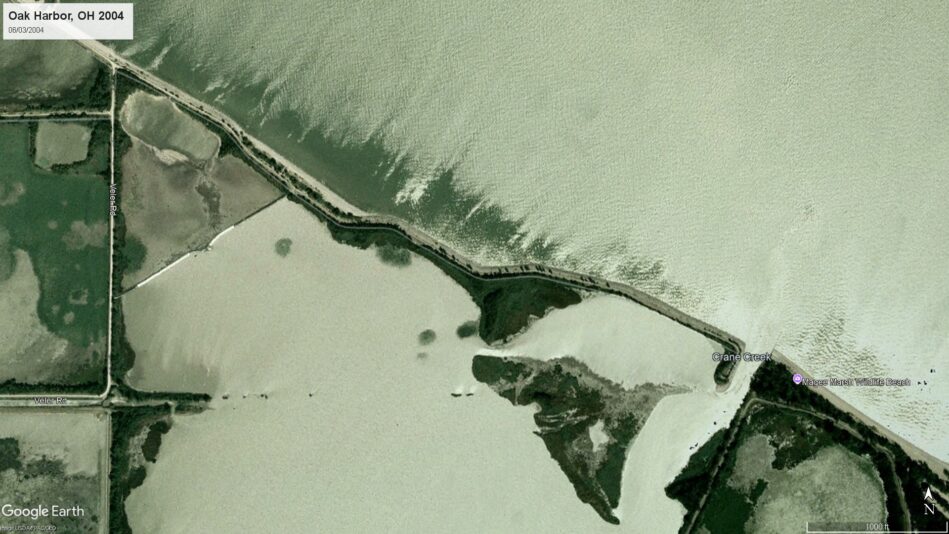
Fifty-two acres of Ottawa National Wildlife Refuge (ONWR) wetlands needed water blocked off to promote plant growth. A 6ft tall AquaDam cofferdam system was installed to control the fluctuating water depth. The project de-watered an area promoting wetland plants' growth in mud flats. This project lasted approximately six months. Fluctuating water levels will have less effect on the plants after they have had a couple of months to grow.
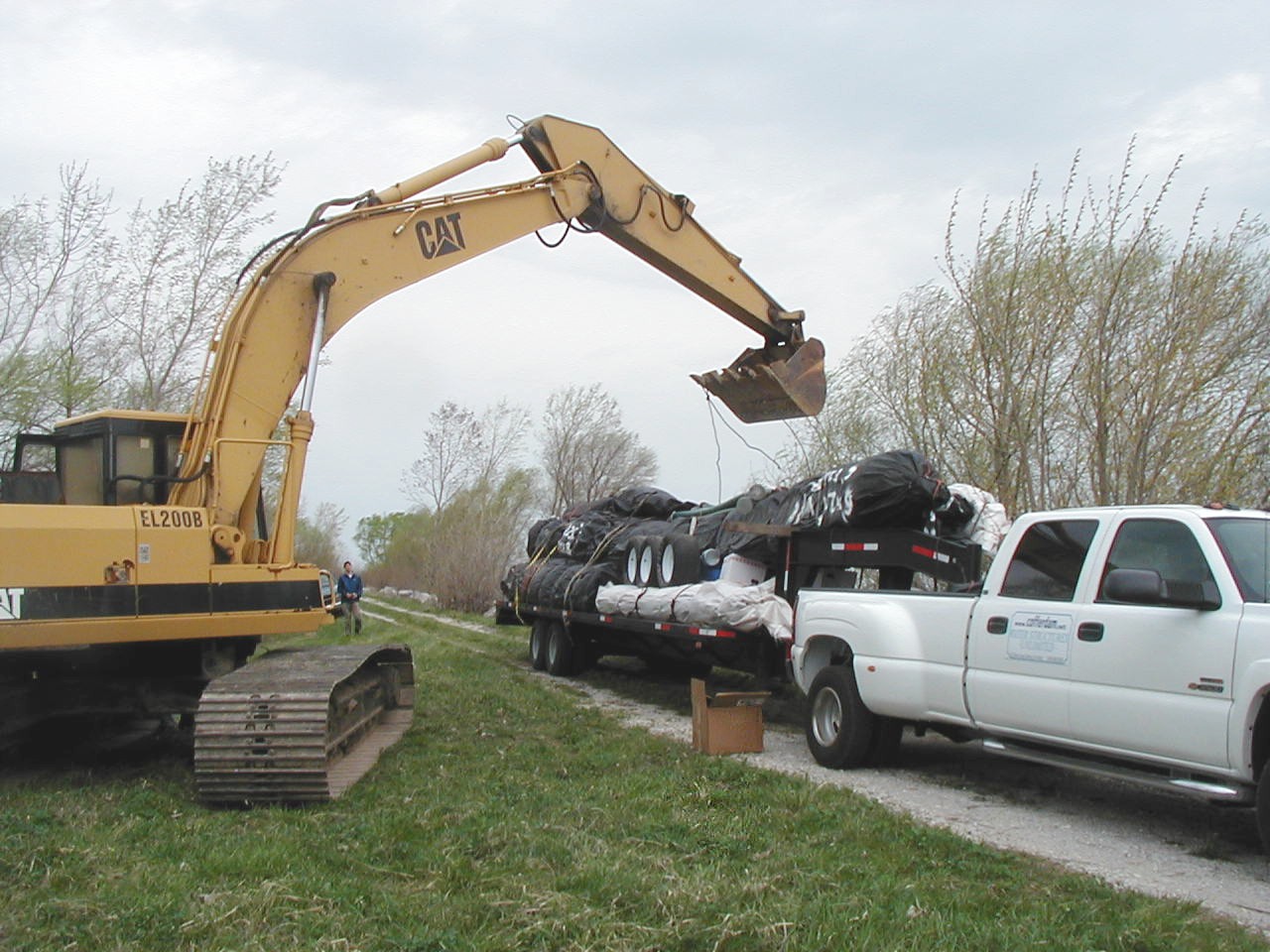
AquaDams come shipped rolled up like a carpet roll on a wooden beam, wrapped in a protective covering, and have two lift ropes/straps. This cofferdam system consisted of seven 6ft tall AquaDams integrated with connection collars totaling 1,500ft in length, from bank to bank. Six single closed end (SCE) and one double open end (DOE) AquaDams.
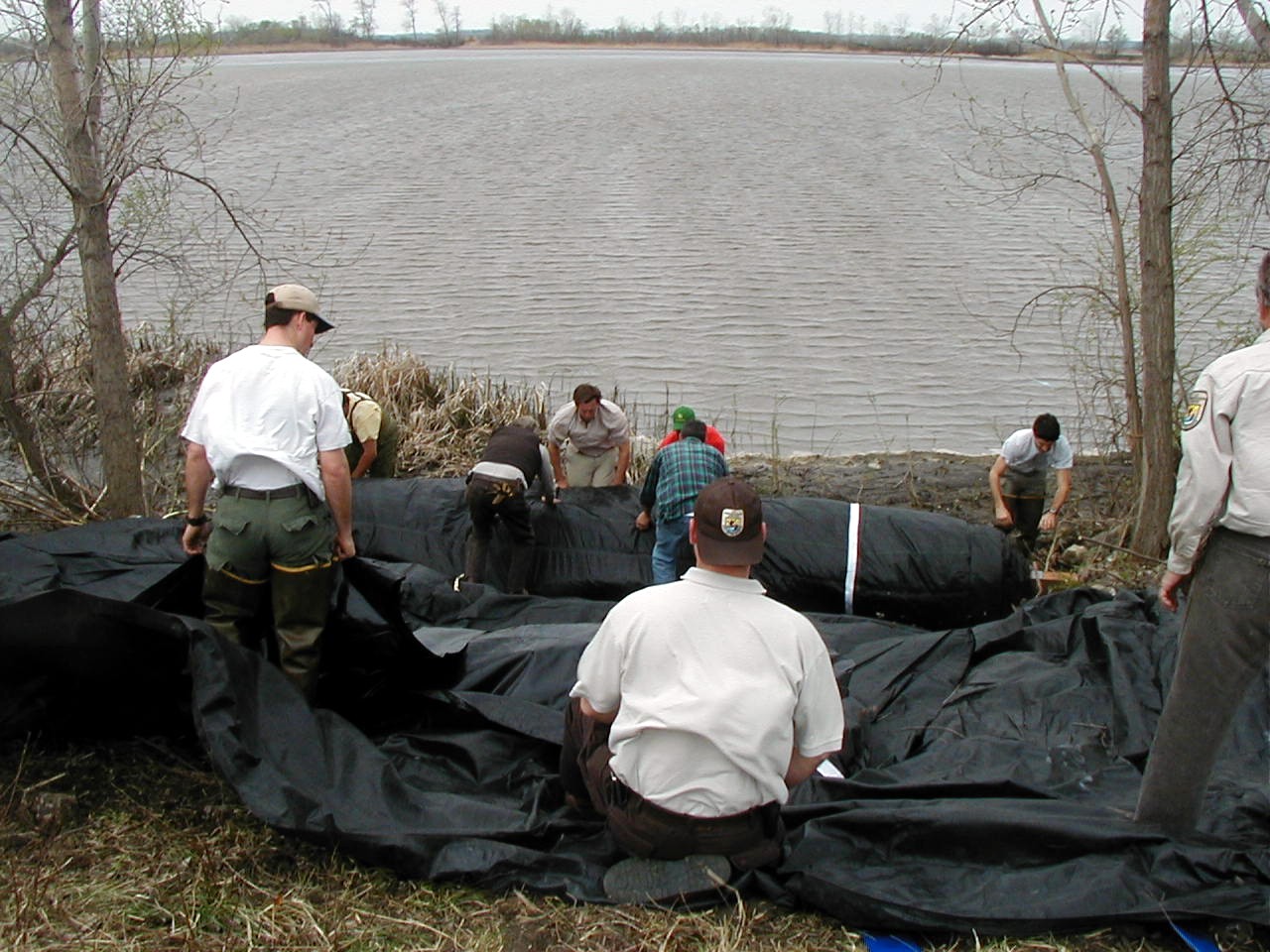
The crew consisted of United States Geological Survey (USGS) and ONWR personnel. Workers cleared the brush and began to unroll the AquaDam down its starting bank on shore. A SCE AquaDam requires a starting bank to keep its starting point (open end) higher in elevation than the body of the AquaDam. The open end and fill-tubes of a SCE AquaDam must stay elevated higher than the full height of the dam along its given path. An AquaDam will only reach its full height at the lowest elevation along its given path.
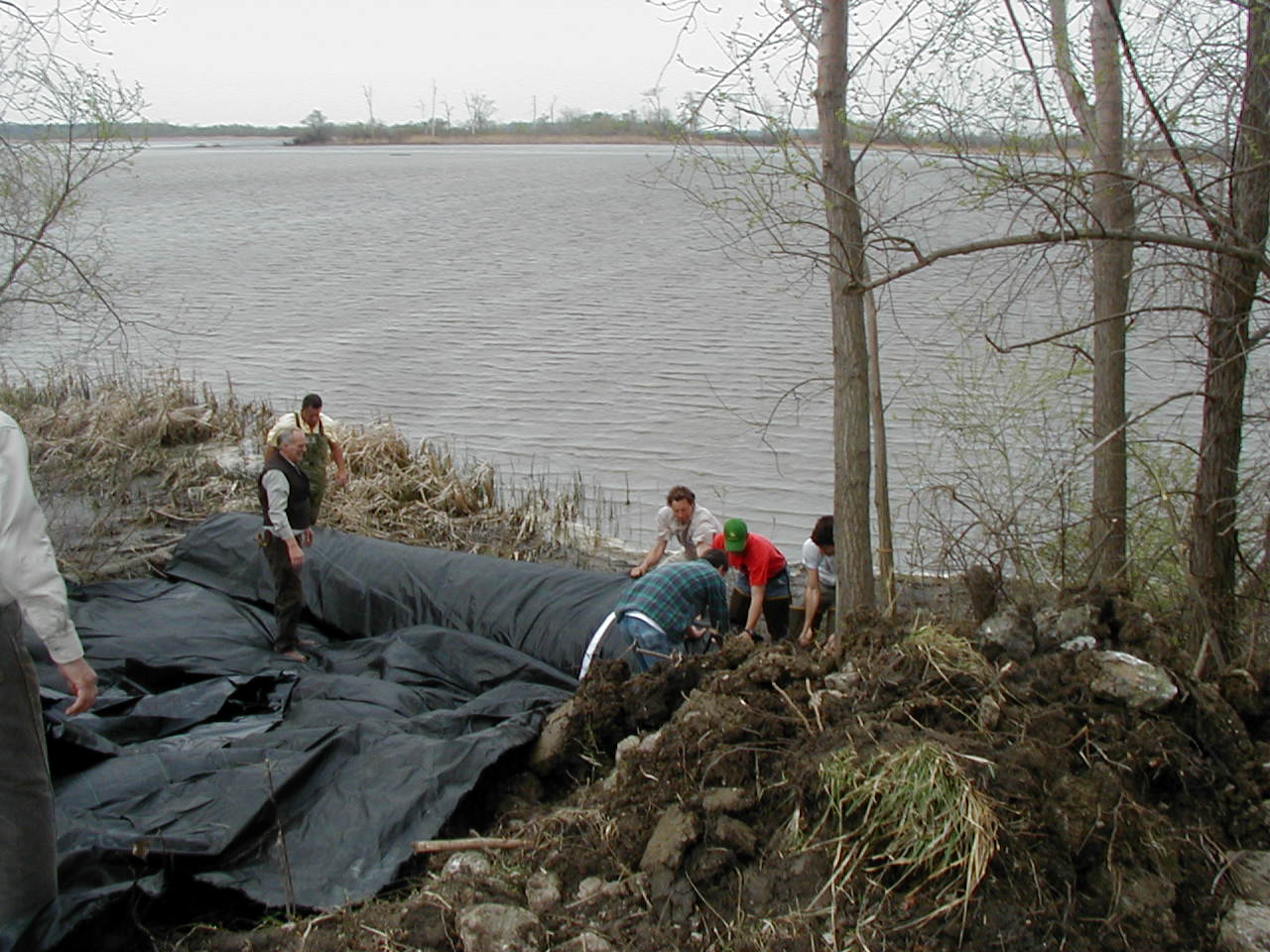
Workers unroll the first 6ft tall SCE AquaDam down its starting bank to the edge of the water. The open end of the AquaDam went at least 6ft up the bank and was secured to unmovable objects to keep it from moving while filling. The fill-tubes need to go even further up the bank. Discharge hoses went inside the fill-tubes approximately ten feet down the bank.
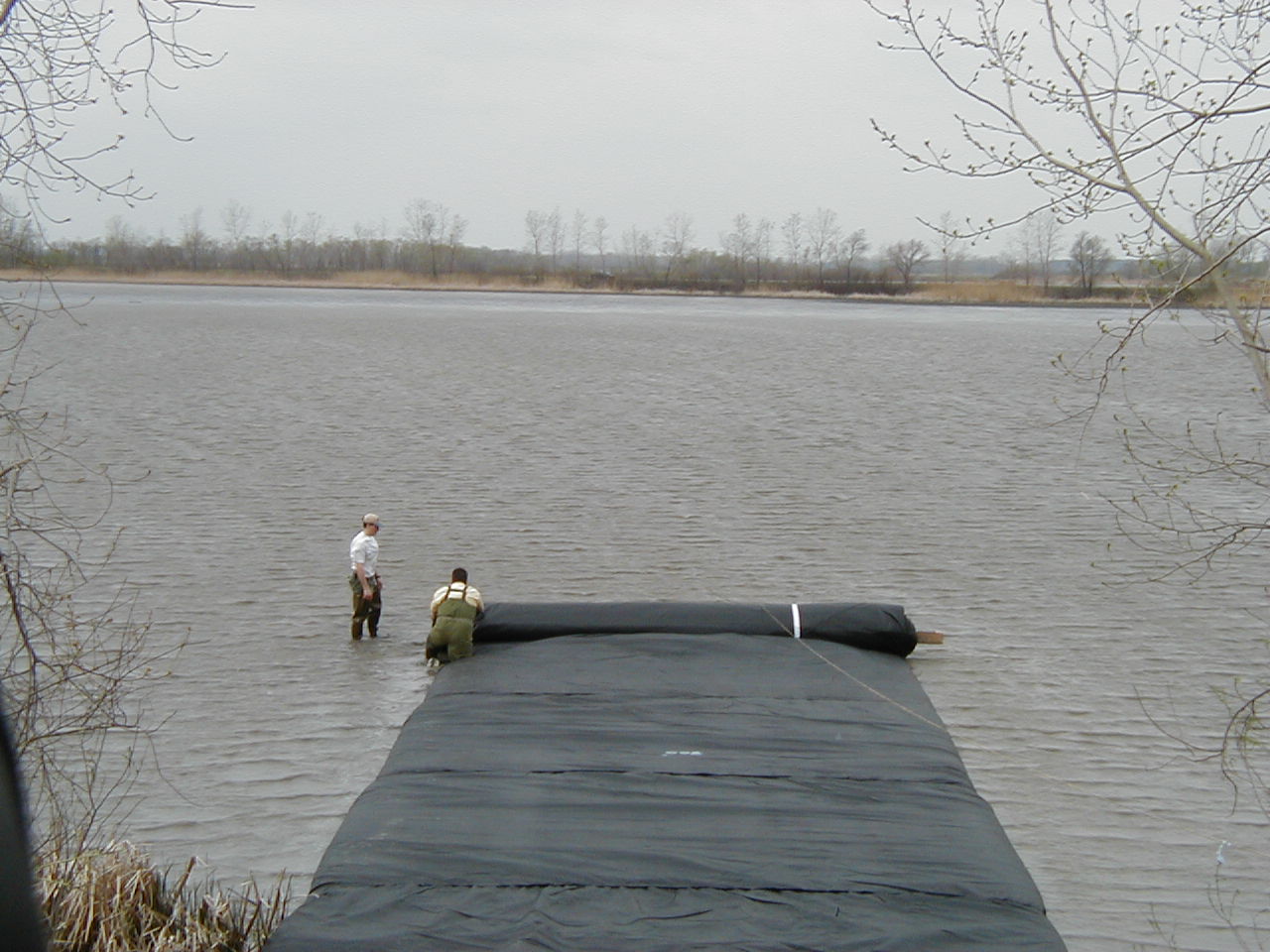
Depending on which way the wind blows the water on this mud flat, which is not very deep, determines the water depth in that area. If the winds can blow water towards the work area, increasing the water depth to almost four inches. As the AquaDam fills with water, the pressure from the water inside the fill-tubes pushes on the roll end causing it to unroll.
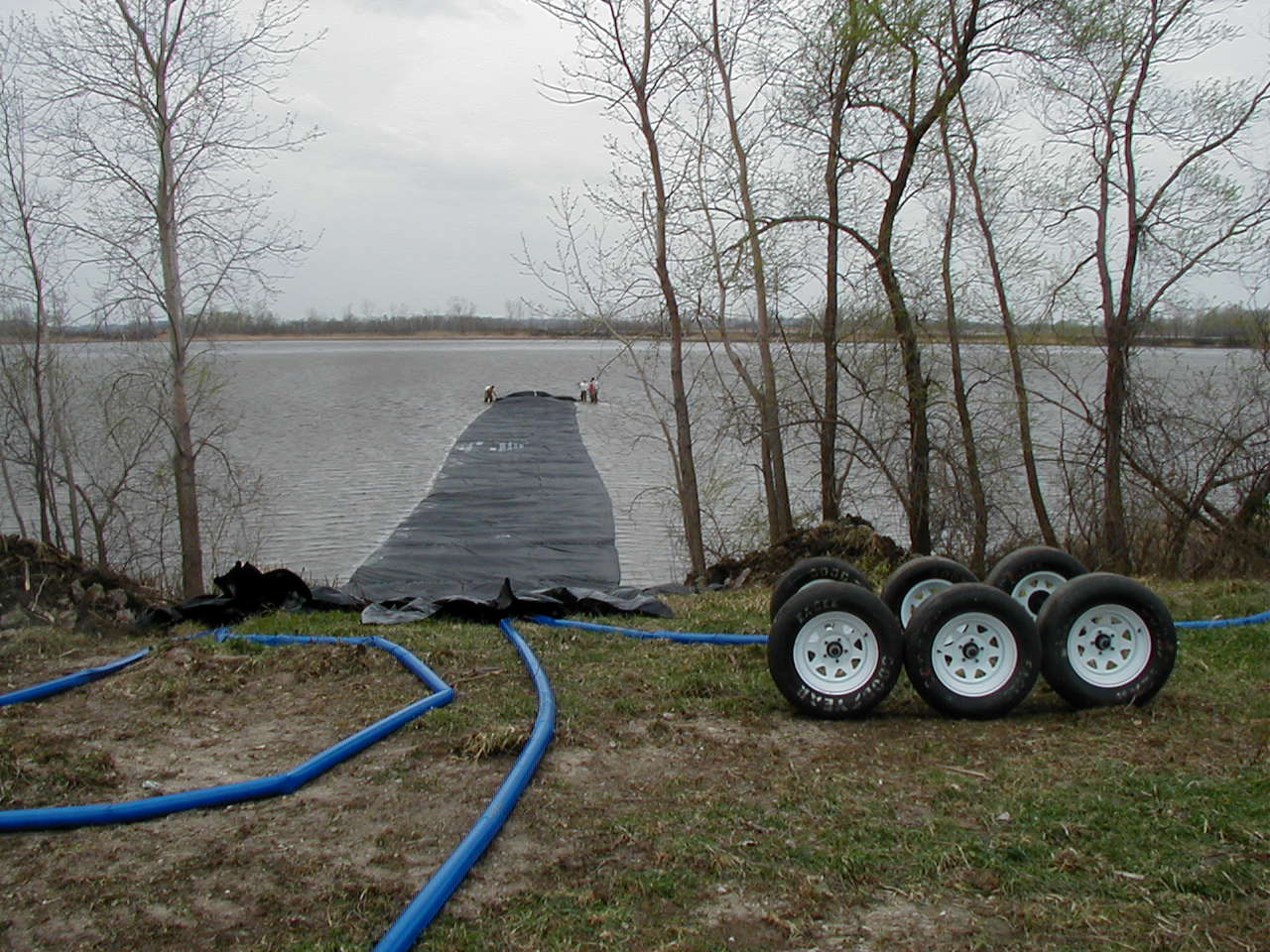
This first 6ft tall section was 235ft long and included a connection collar. Each of these AquaDams weighed approximately 1,800lbs, dry. The wheels in this photo helped transport the AquaDams out to the closed end and connection collar of the dam previously installed. Heavy lifting of construction equipment was not permitted in the mud at this site.
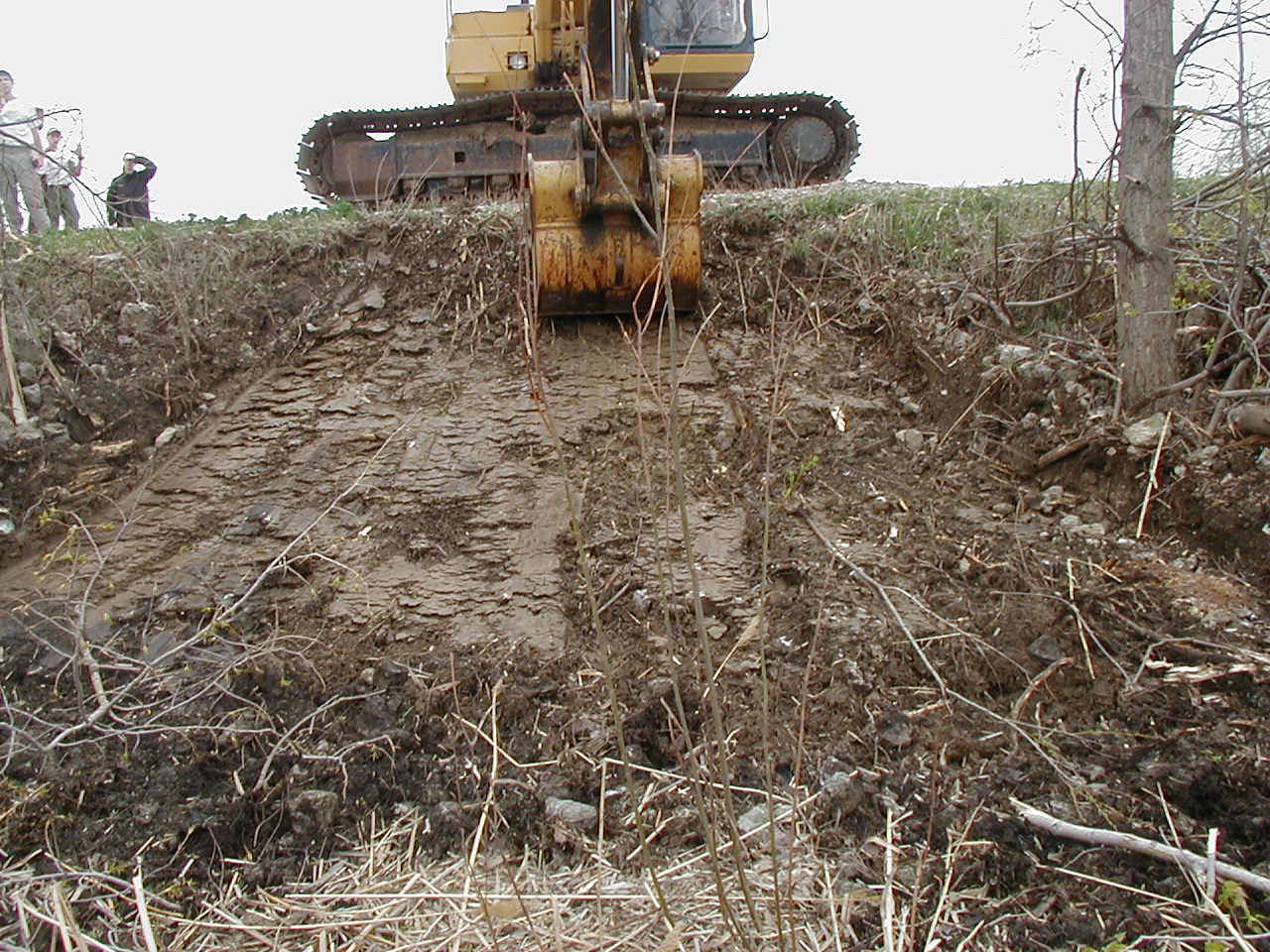
This is the bank on the opposite side of the mud flat, where the other side of the cofferdam will start from. The bank needed clearing so that a 6ft tall SCE AquaDam could launch from this location.
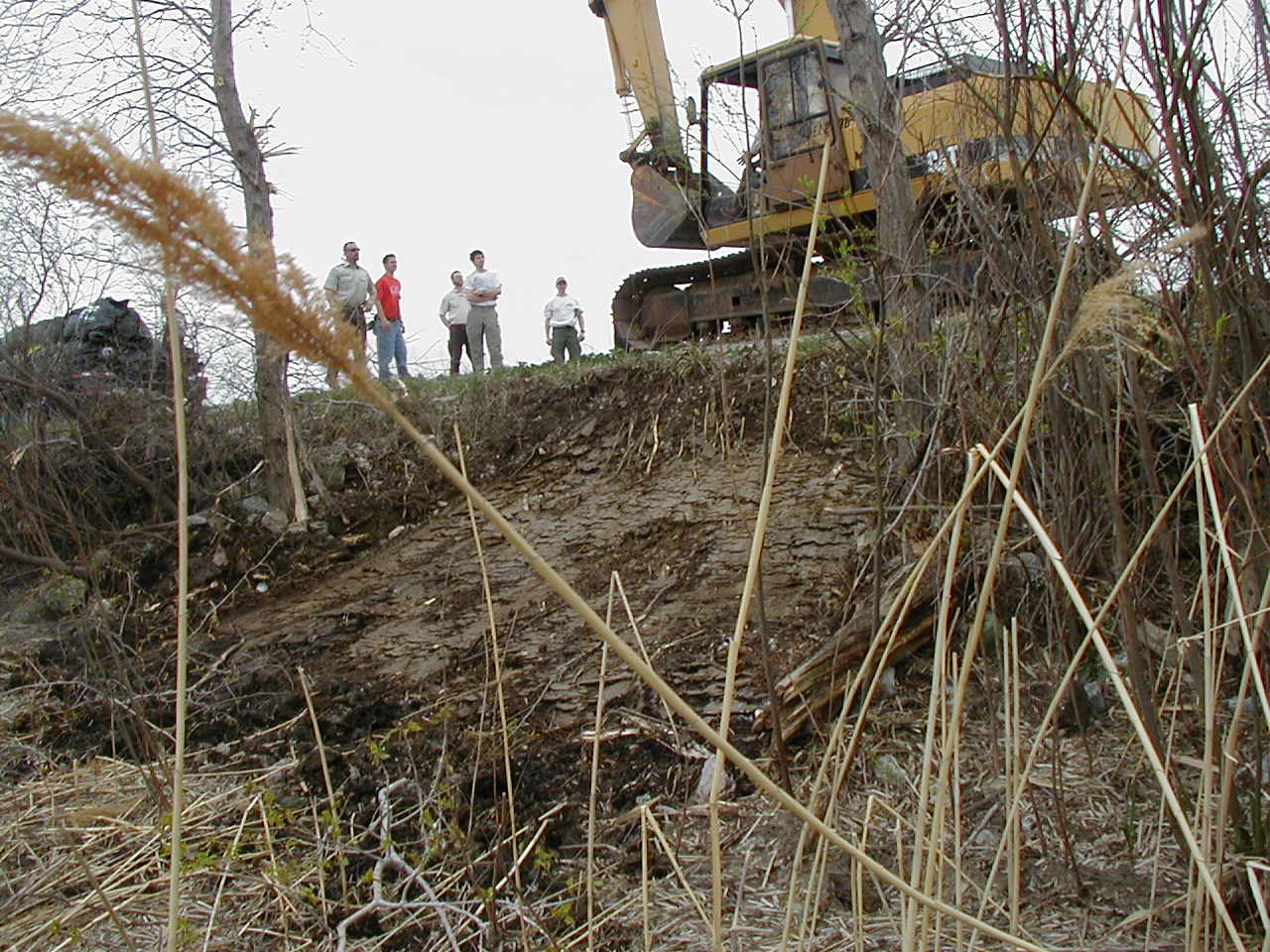
Another photo shows further preparations of the starting bank on the opposite shore. A 6ft tall SCE AquaDam will reach the top of this bank when it is full of water.
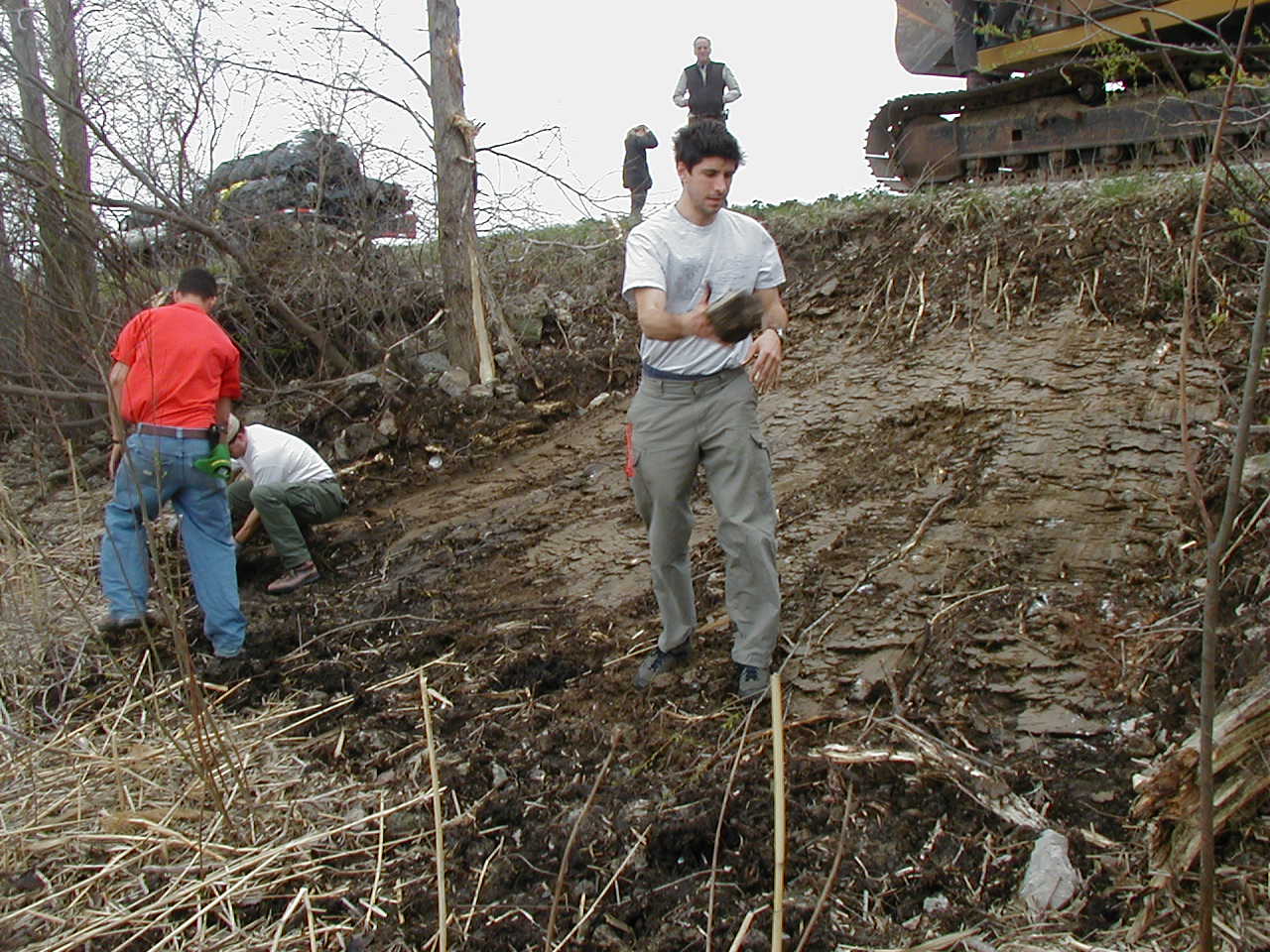
The bank needed clearing because riprap (large rocks) was on the face of the bank. These rocks needed to be removed, many of them by hand (working the old-fashioned way). Rock picking is important to help with the seal the AquaDam makes with the bank and the floor of the body of water.
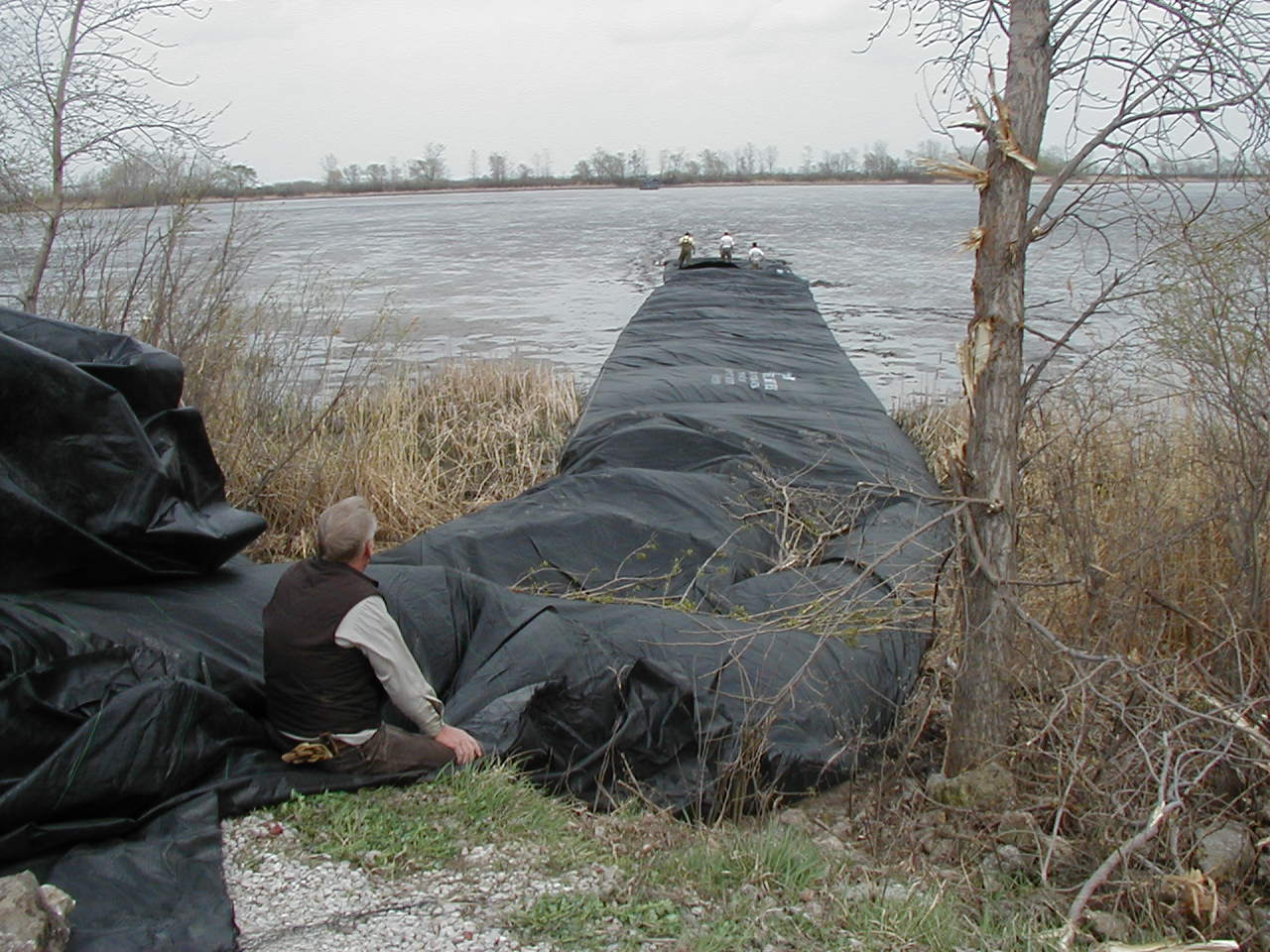
A slight bend after the starting bank allowed the AquaDam to leave the bank squarely and then be redirected towards the intended path. An AquaDam will not marry up to a bank properly unless it can abut into it squarely. After the AquaDam has unrolled past the toe of the bank then turn the dam in the direction needed. While the first 6ft tall SCE AquaDam was filling, workers installed this one.
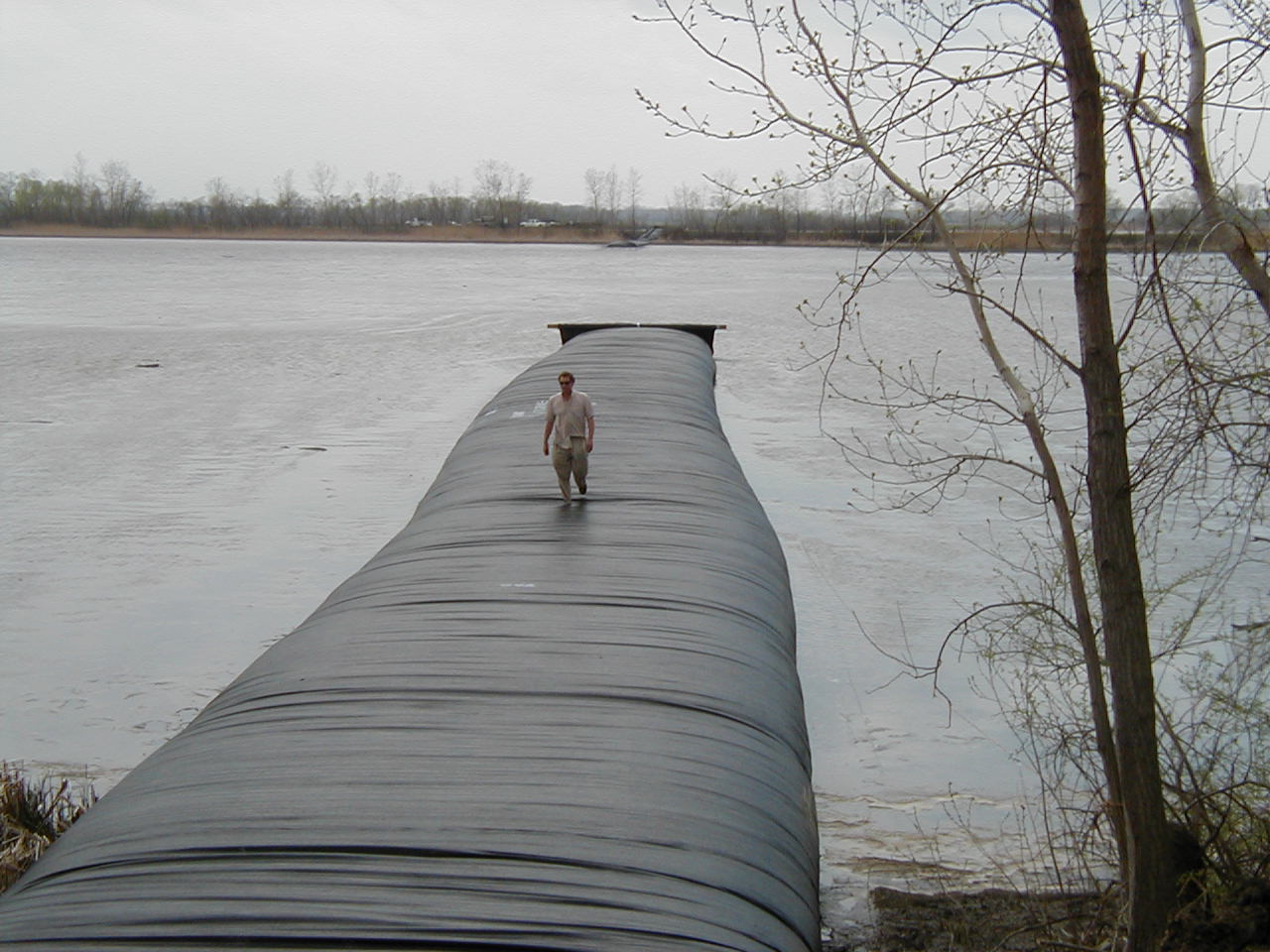
Back on the other starting bank, the first 6ft tall SCE AquaDam is almost full. This AquaDam was full enough to support the weight of multiple people and an AquaDam (on wheels), weighing 1,800lbs. At this point, the wind has blown off all the water from the mud flat. The water depth was not deep enough to operate the pumps.
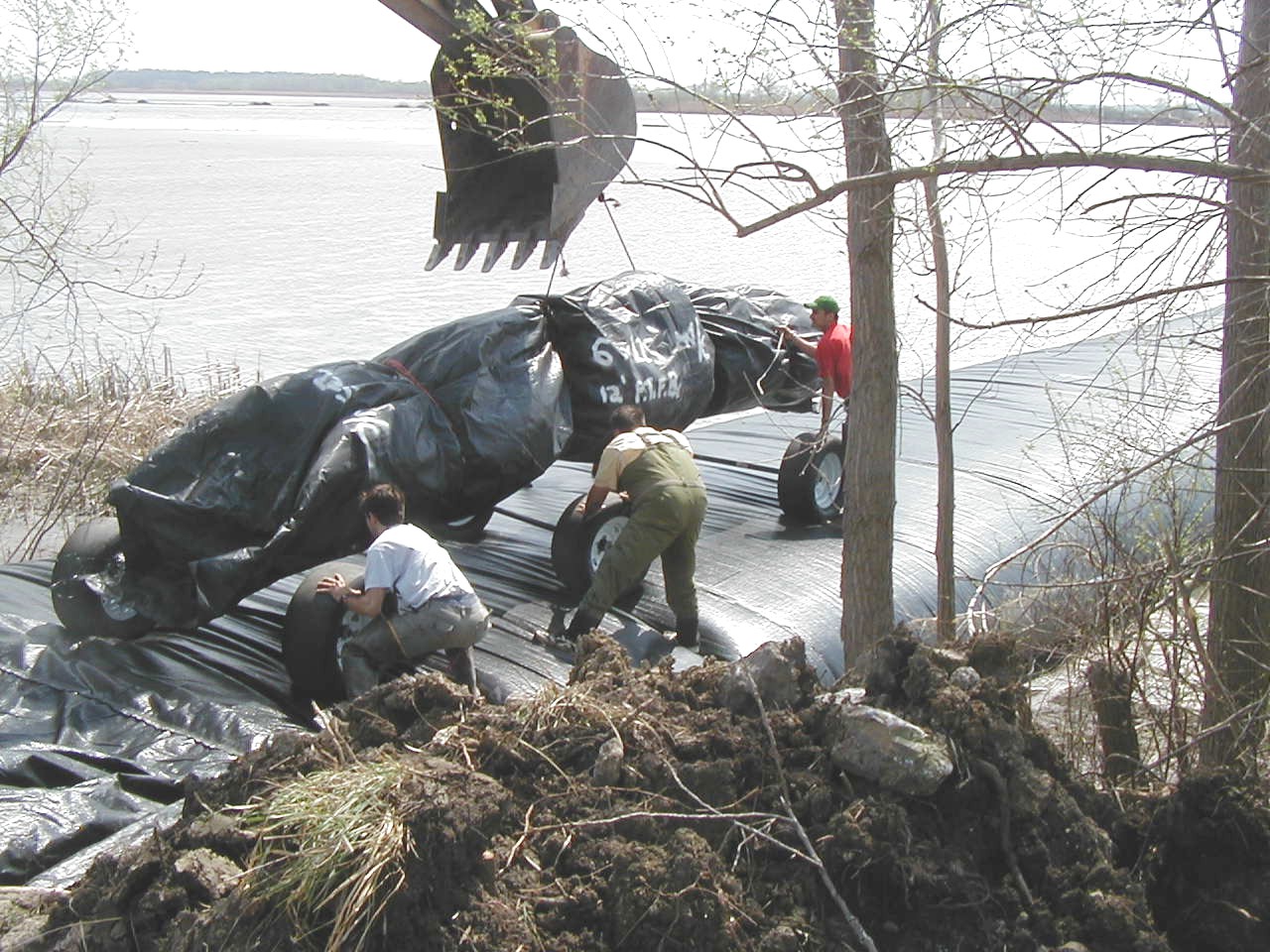
The next 6ft tall SCE AquaDam was placed on the three axles and rolled to the closed end with a connection collar of the first dam. The wheels were a special lightweight fiberglass racing wheel. They had a wider footprint to help spread the weight load out over the filled AquaDam.
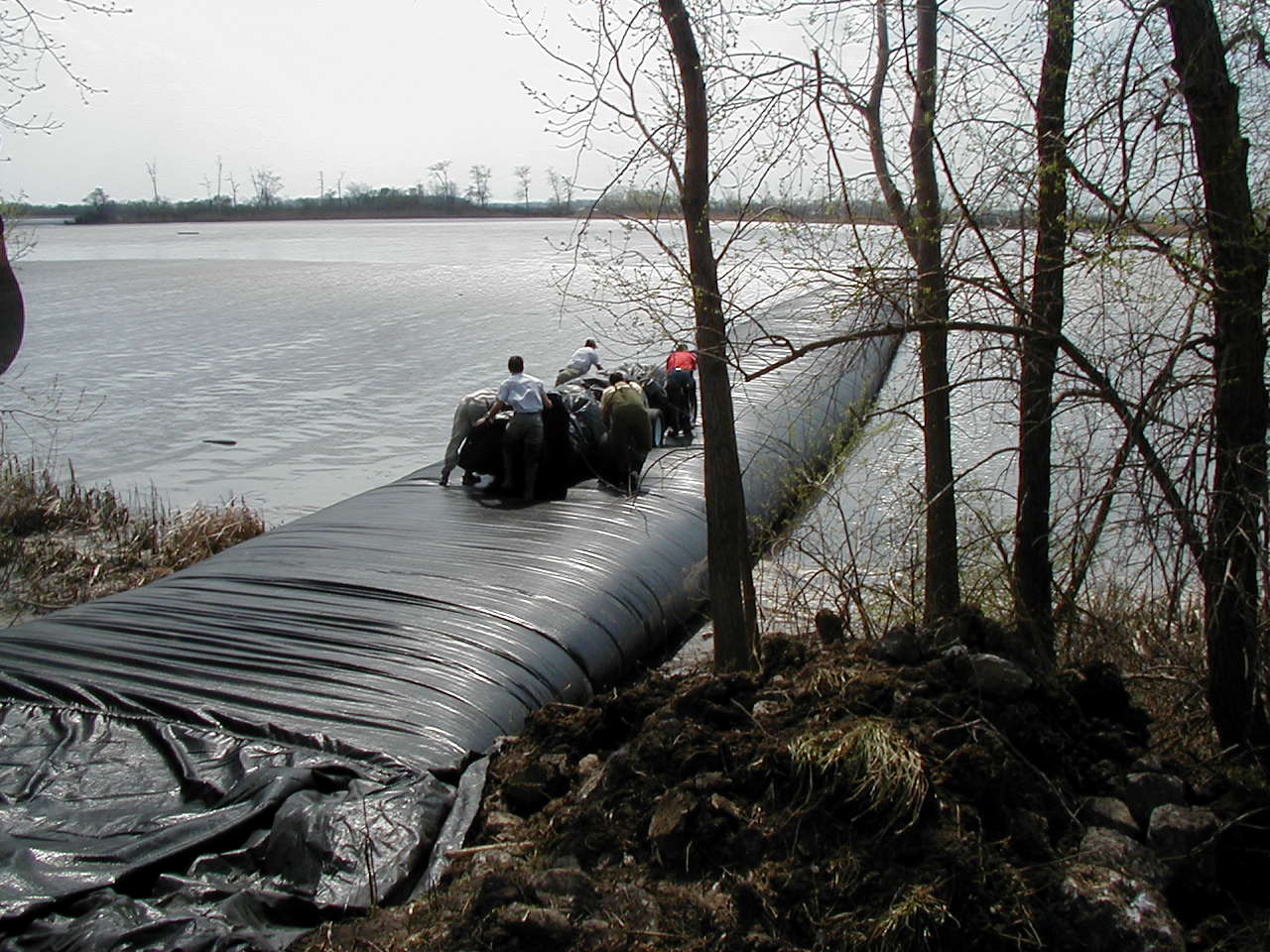
The AquaDam on wheels rolled easily across the top of the water-filled one. It took one person for each wheel. This way each wheel could be controlled manually. It took only minutes to move 1,800lbs a total of 235ft.
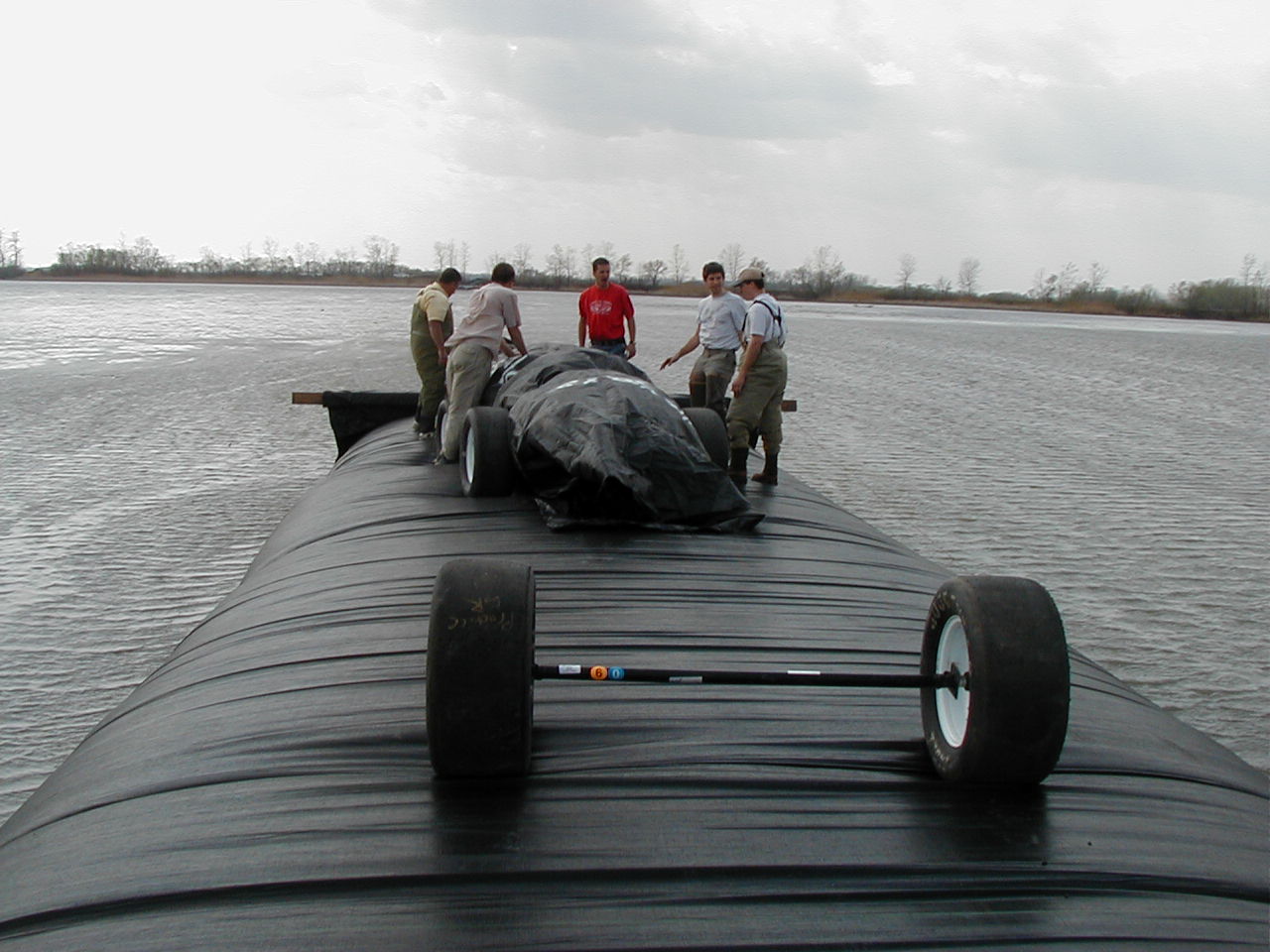
No heavy lifting equipment other than people and the racing wheels were allowed to be used in the mud flat due to the environmental impact of leaving permanent tracks.
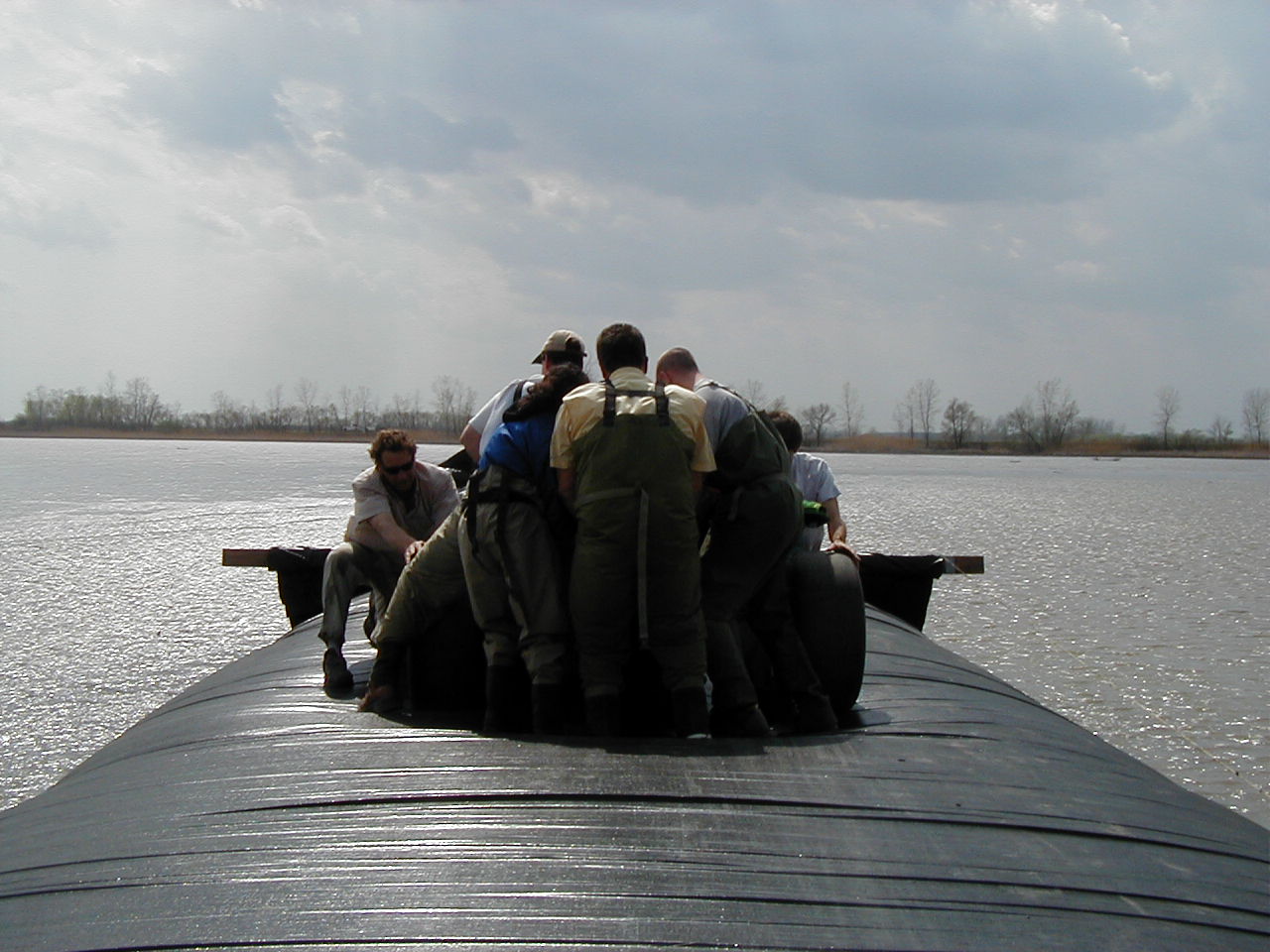
With the next 6ft tall AquaDam at the connection collar of the previous dam, workers remove the protective wrapping and position the roll so that it unrolls in the correct direction while filling.
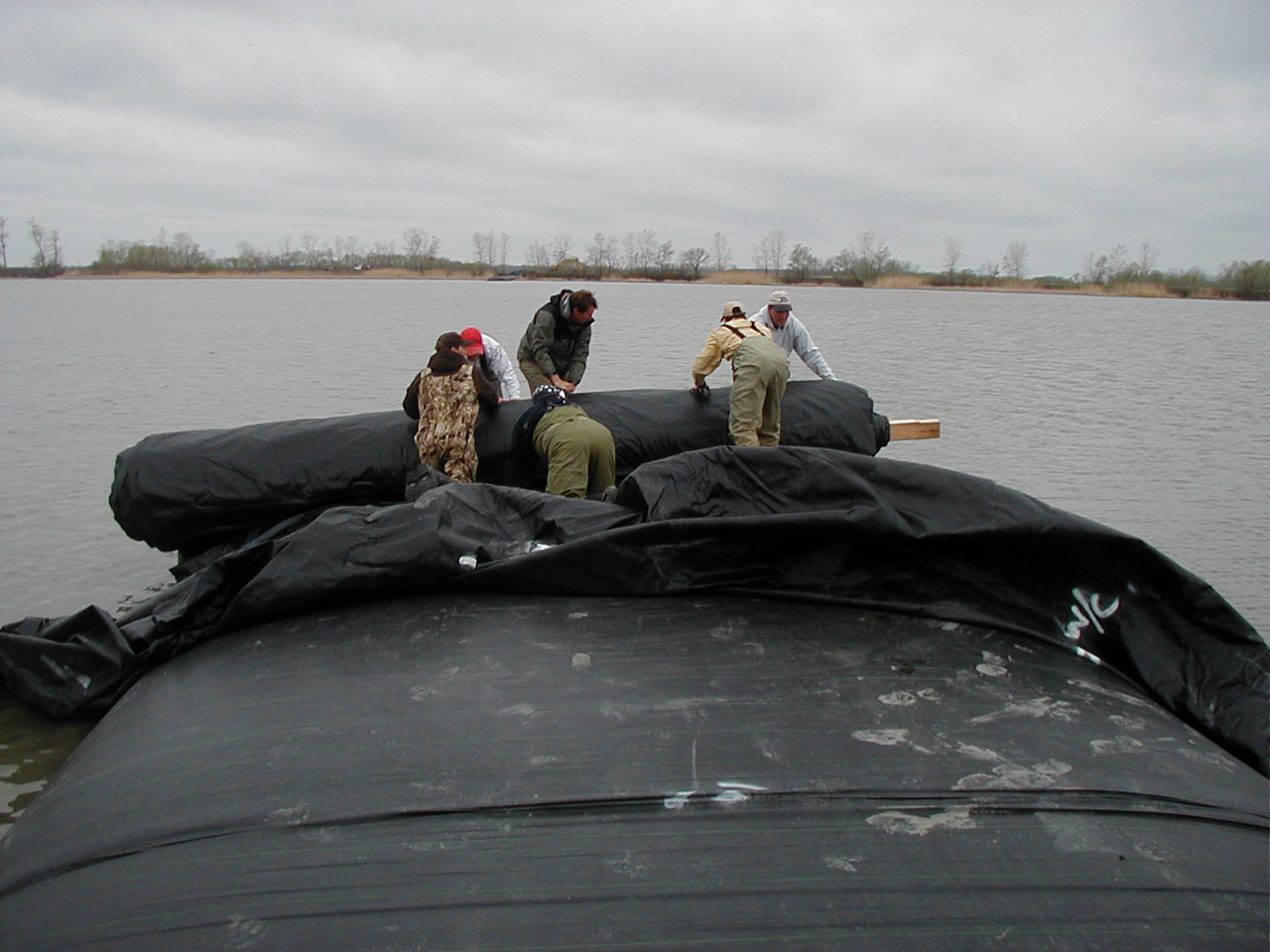
Workers unroll about fifty feet of length, to expose the fill-tubes and have enough length to make a connection.
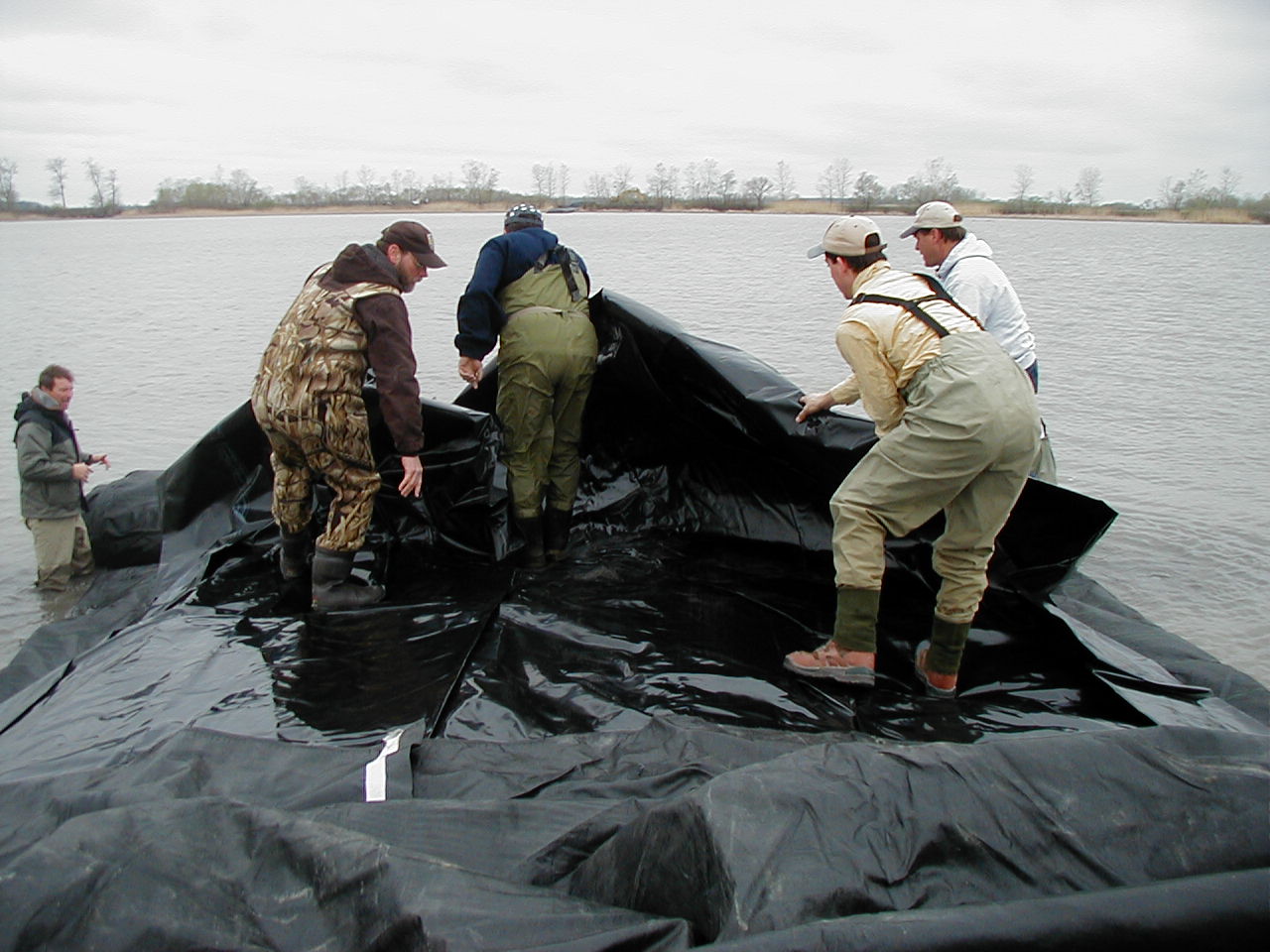
Workers unroll about fifty feet of length, to expose the fill-tubes and have enough length to make a connection.

Holes were cut in the connection collar for the fill-tubes to be pulled through. Workers place the open end of the empty 6ft tall SCE AquaDam on top of the closed end of the first dam’s closed end, inside of the collar.
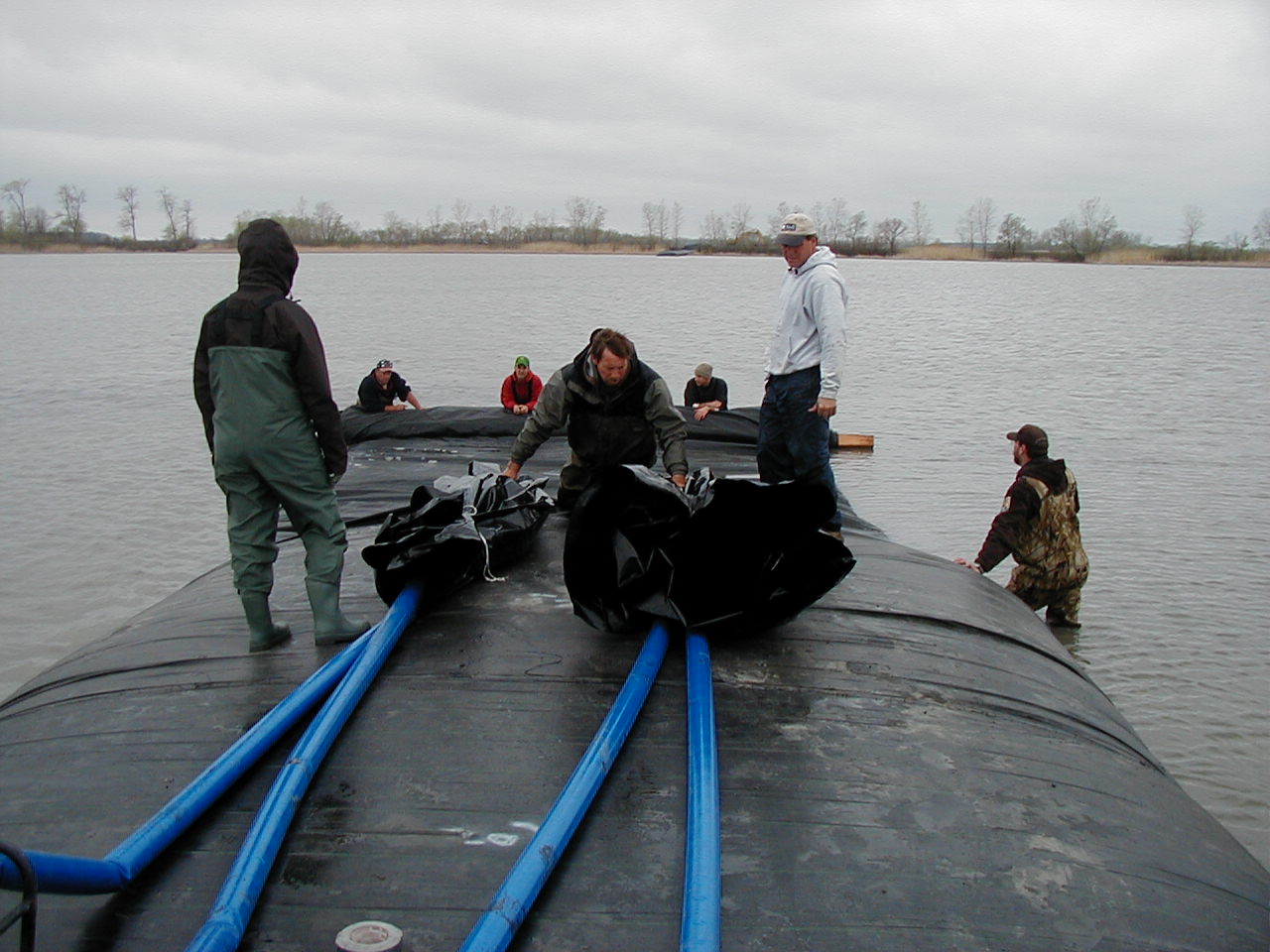
After the connection was made, discharge hoses were placed into the fill-tubes to fill the next AquaDam. The open end of the discharge hoses must be placed inside the fill-tube and extended down the closed end with the connection collar.
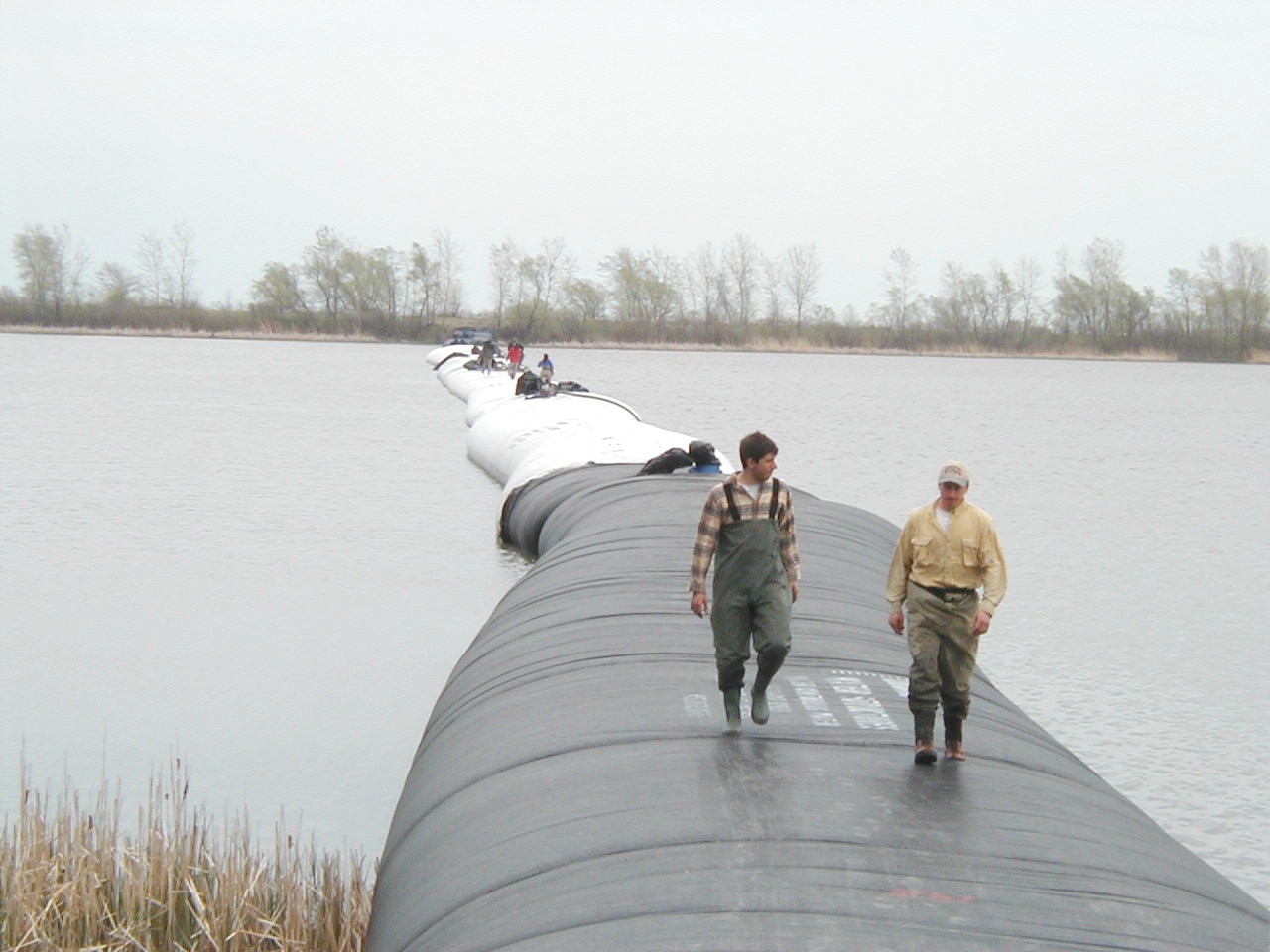
All seven SCE AquaDams have been installed, had their fill-tubes tied up, and workers have begun packing up their equipment.
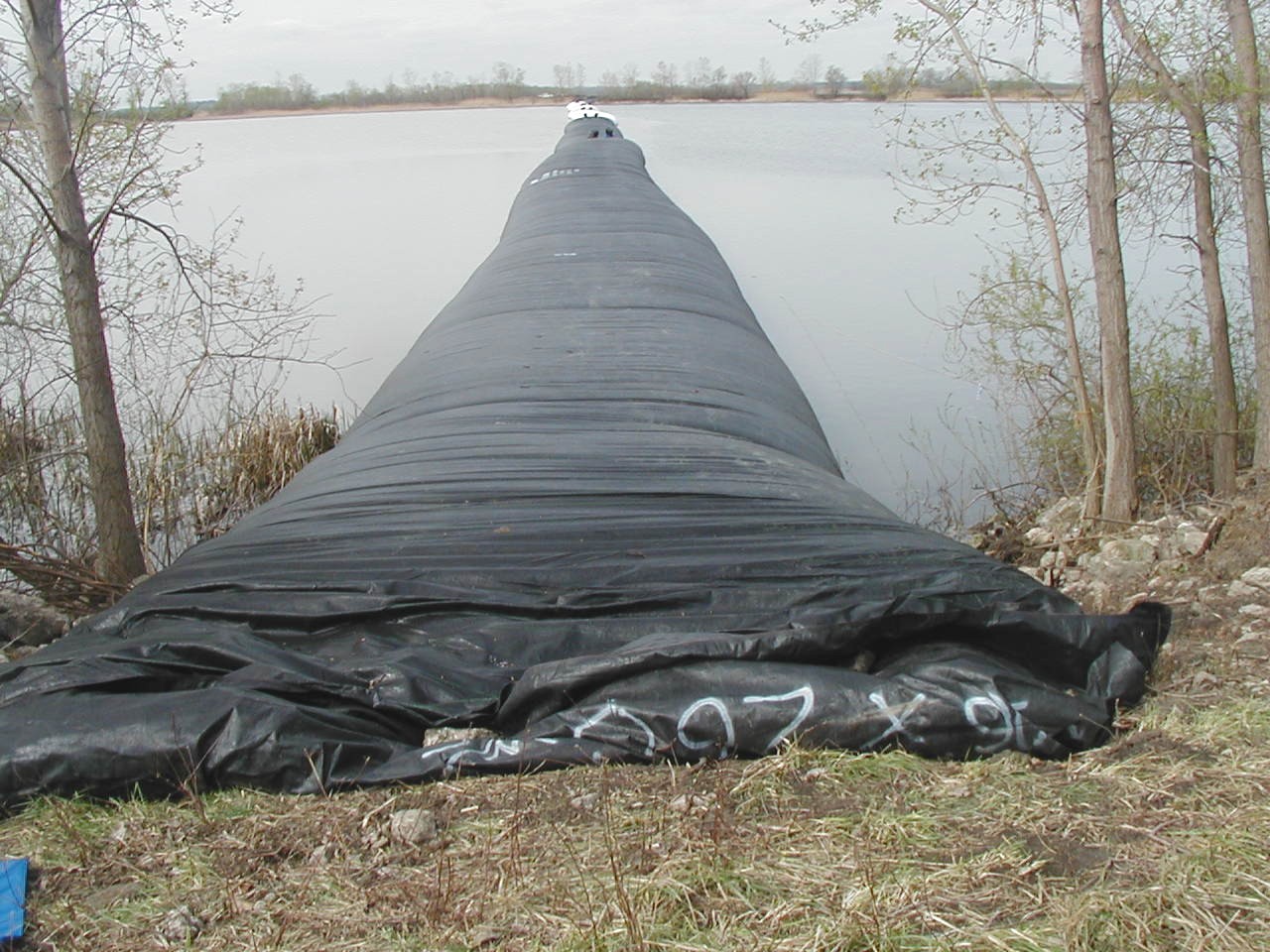
The fill-tubes of the first 6ft tall SCE AquaDam have been tied up to prevent any water from draining out of them.
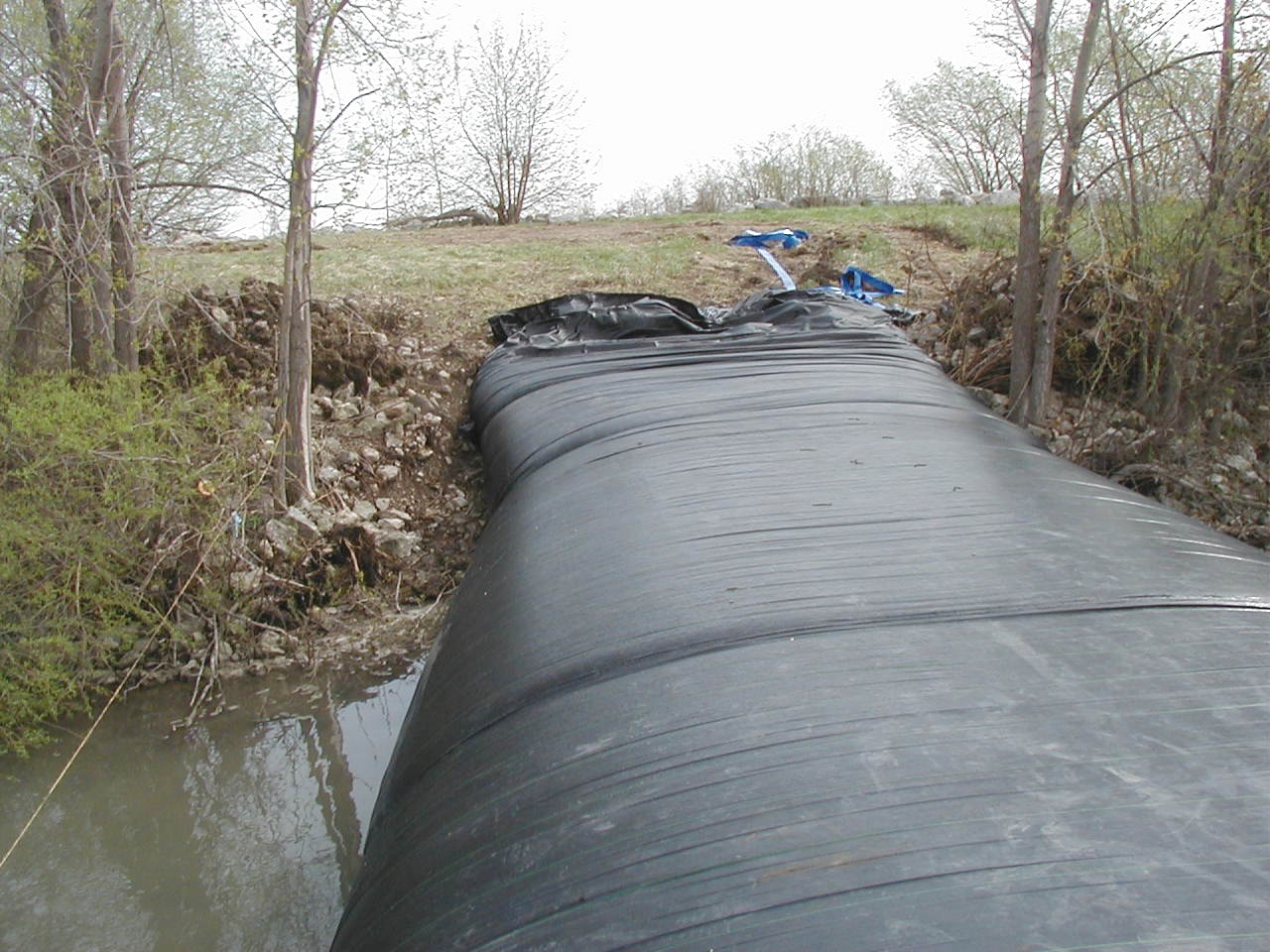
Looking back at the starting bank for the first 6ft tall SCE AquaDam, notice that the open end and fill-tubes are about a foot higher than the full body of the dam.

Here we can see the fill-tubes tied up and secured from one of the 6ft tall SCE AquaDams integrated with a connection collar.
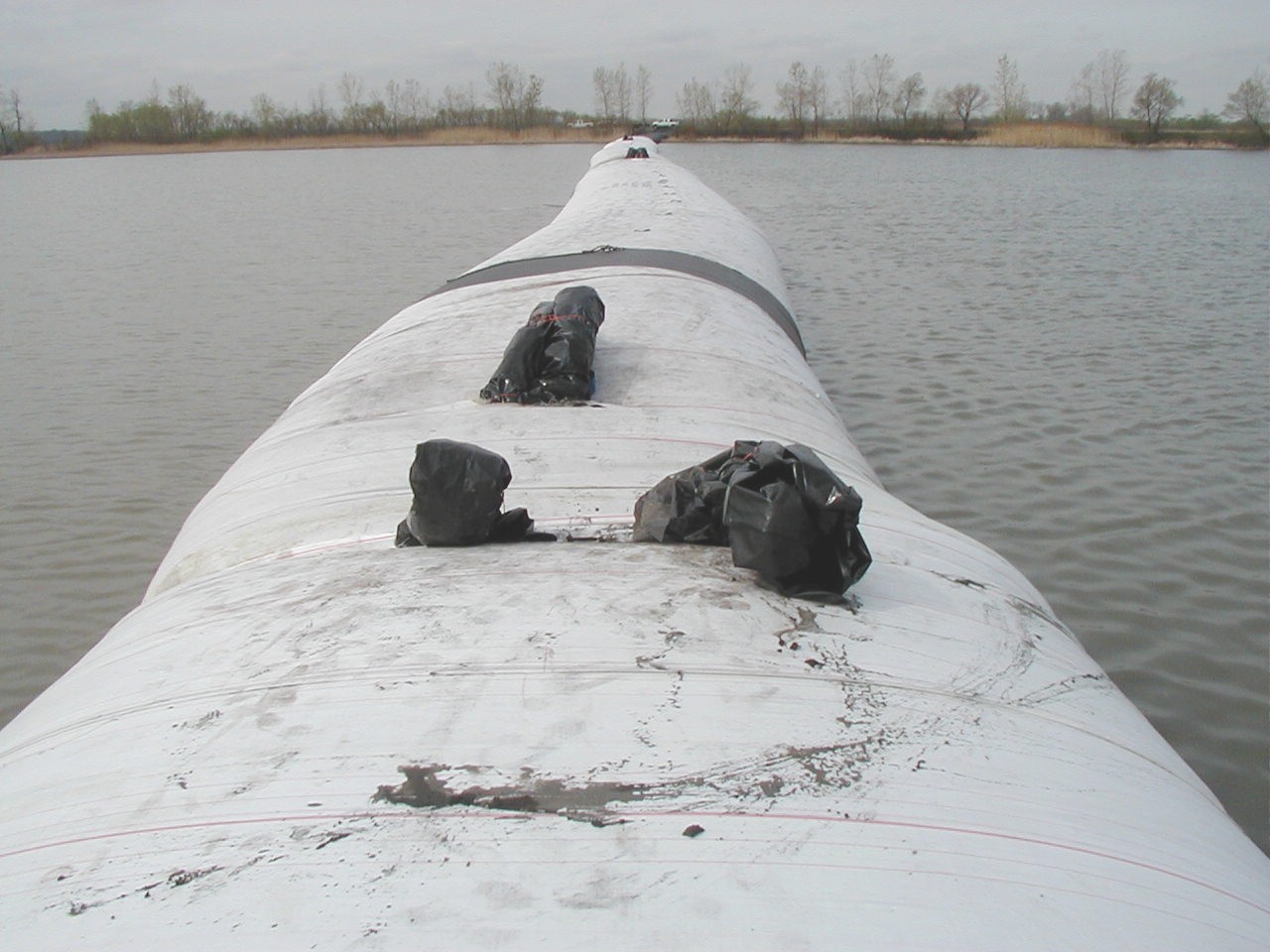
A short length 6ft tall DOE AquaDam made the final connection between the two closed ends, at the center.

The starting bank for the second 6ft tall SCE AquaDam that was launched. Pintail Marsh can is in the background.

Standing in the area to be de-watered looking Southeast. The steam rising out of the cooling tower at Davis-Besse Nuclear Power Plant can be seen above the worker.
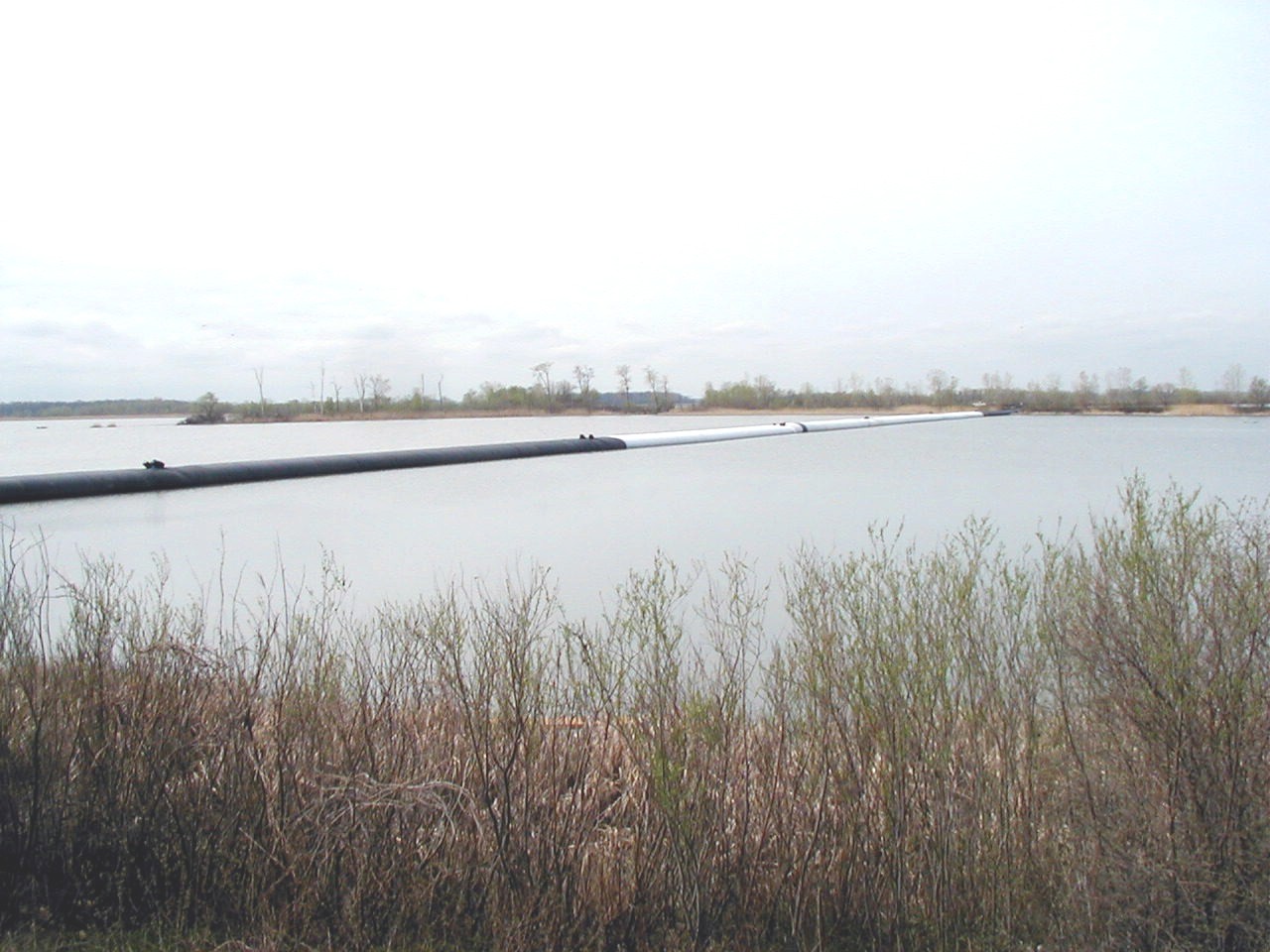
Looking South from the side that will be de-watered.
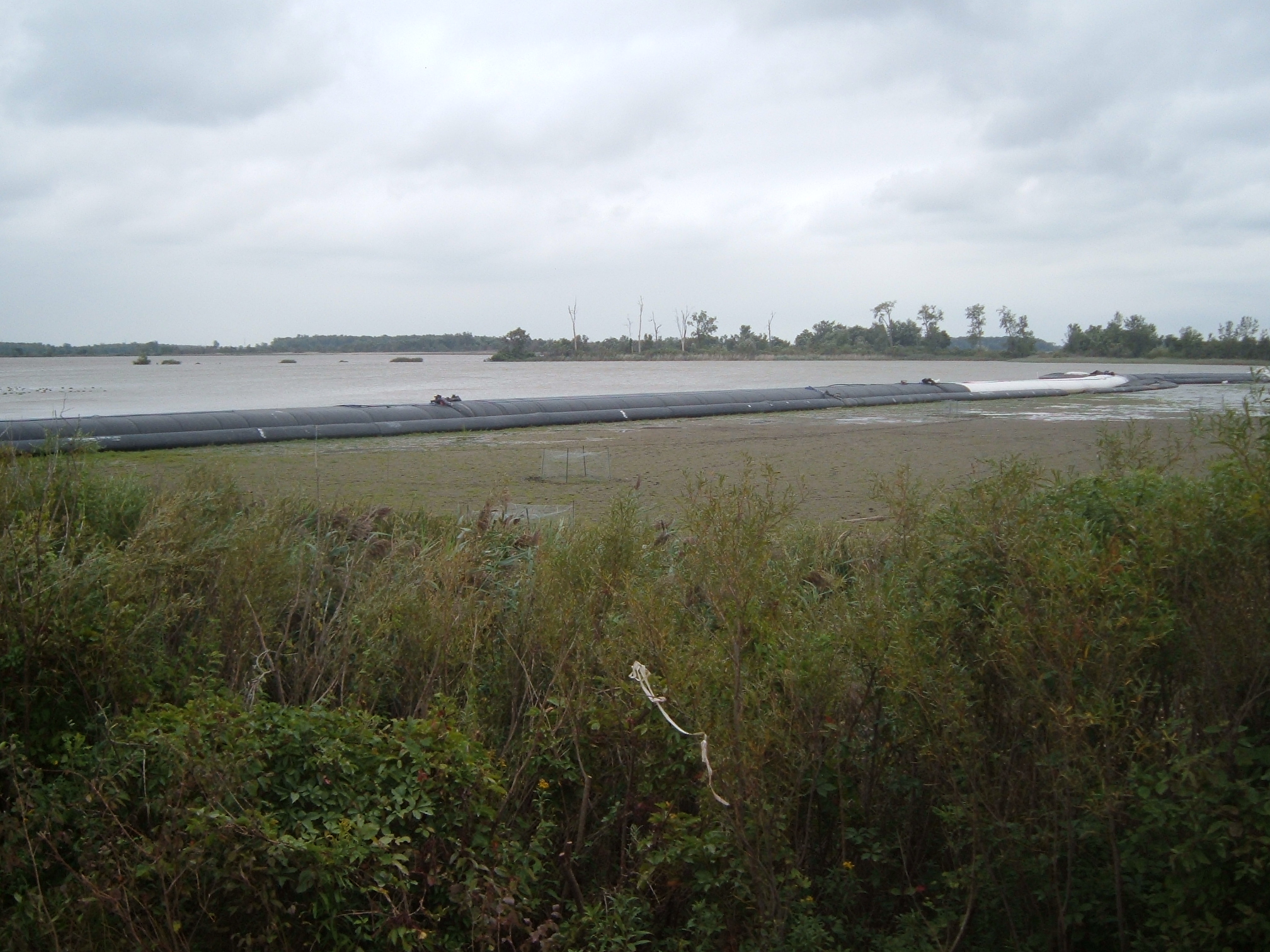
Looking South from the side that has been de-watered.

After the AquaDams were in place for a couple of months and de-watering had occurred, plant life began to grow and thrive.

Smaller AquaDams were installed on the de-watered side of the larger dams for additional support.
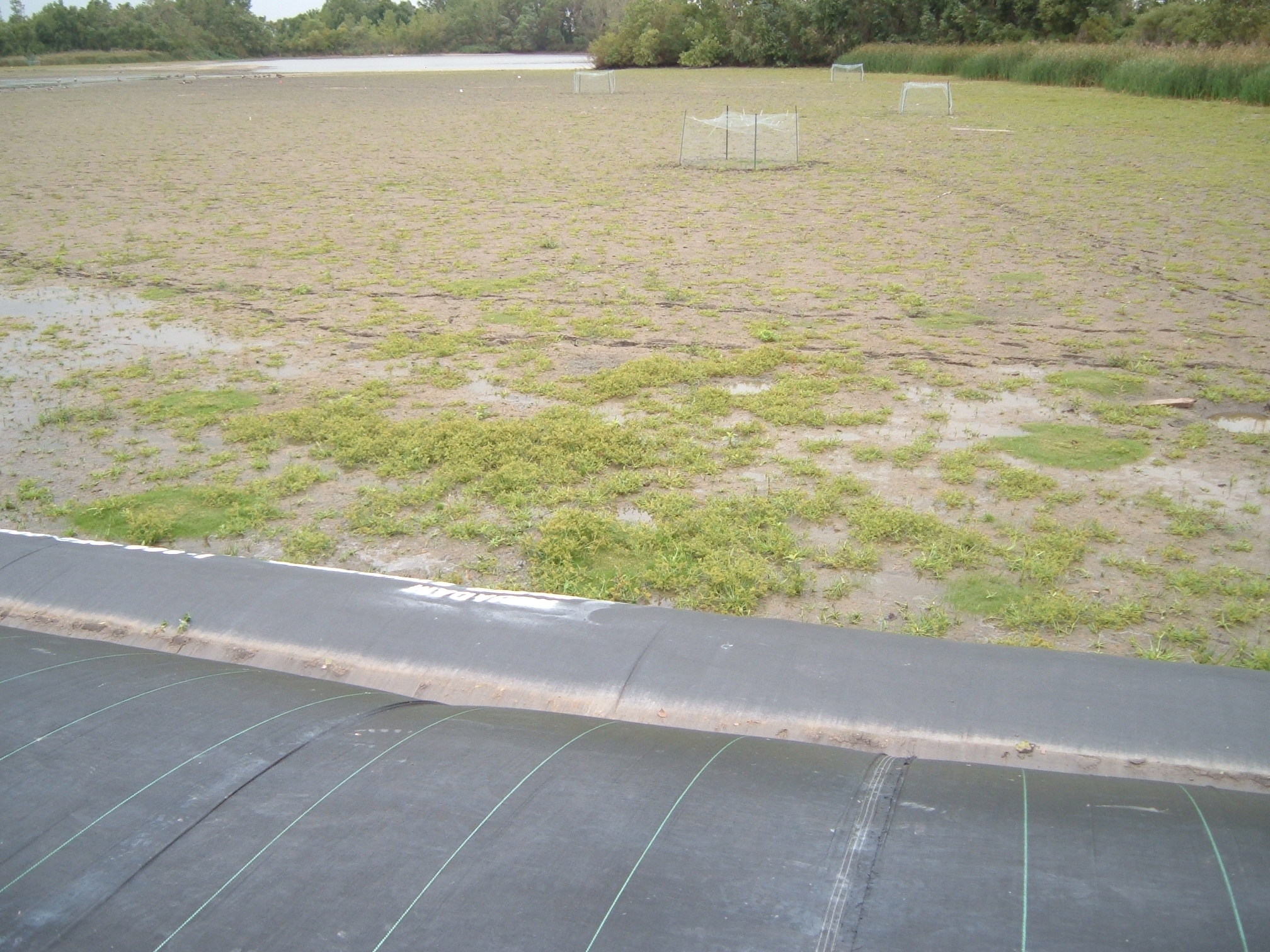
Fencing was put up to keep hungry critters from munching on certain species of plants.
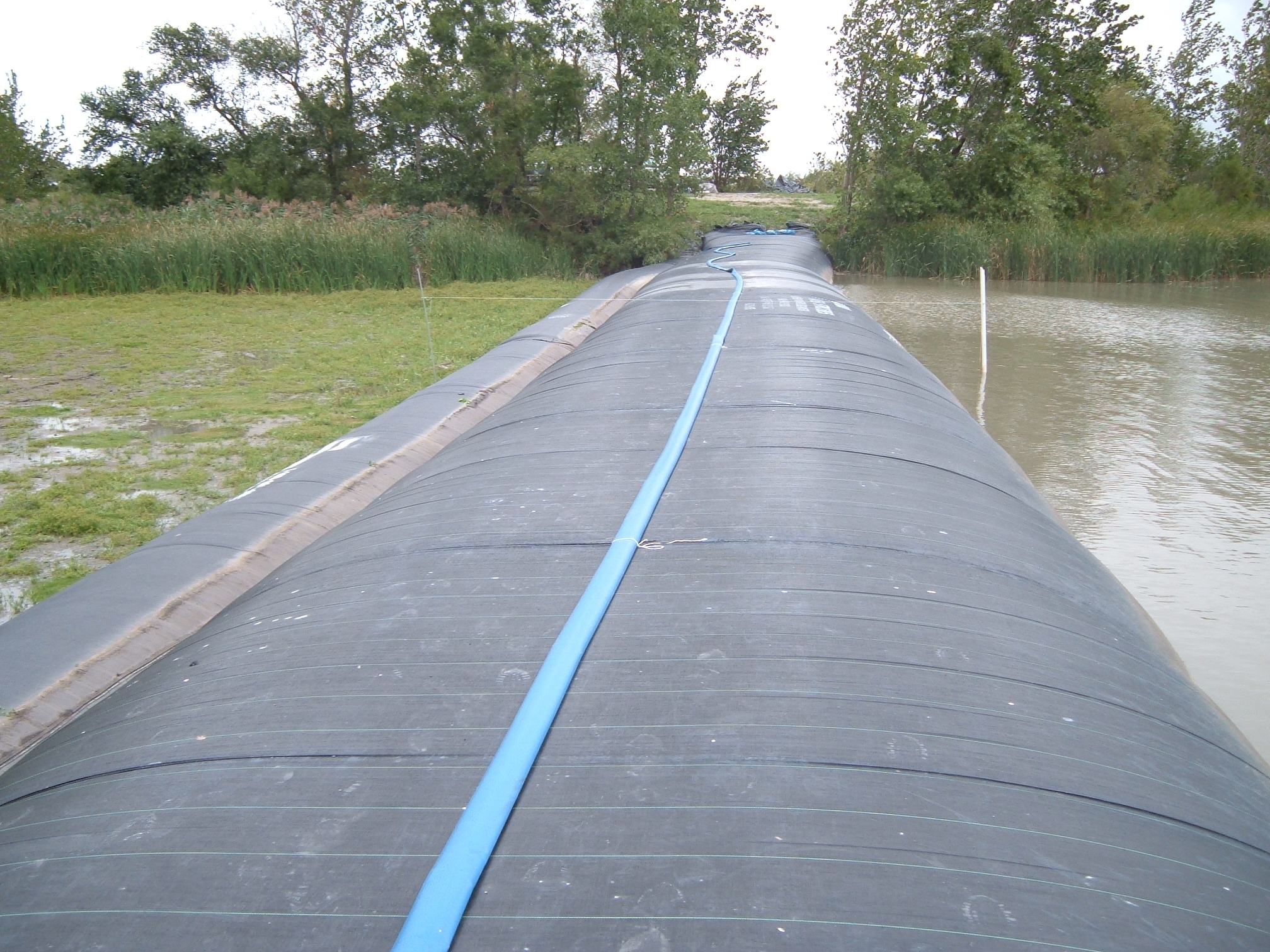
Muddy water on the right and a de-watered area for plant life to grow on the left.

The weight of a filled AquaDam may displace soft mud. Soft mud depths must be included with the maximum controllable water depth. A worker should push a measuring rod into the soft mud when measuring the maximum controllable water depth for an AquaDam.

Six months later it is time to remove the 6ft tall AquaDam cofferdam system. Before removing an AquaDam it is important to re-water the area that was de-watered (work area).
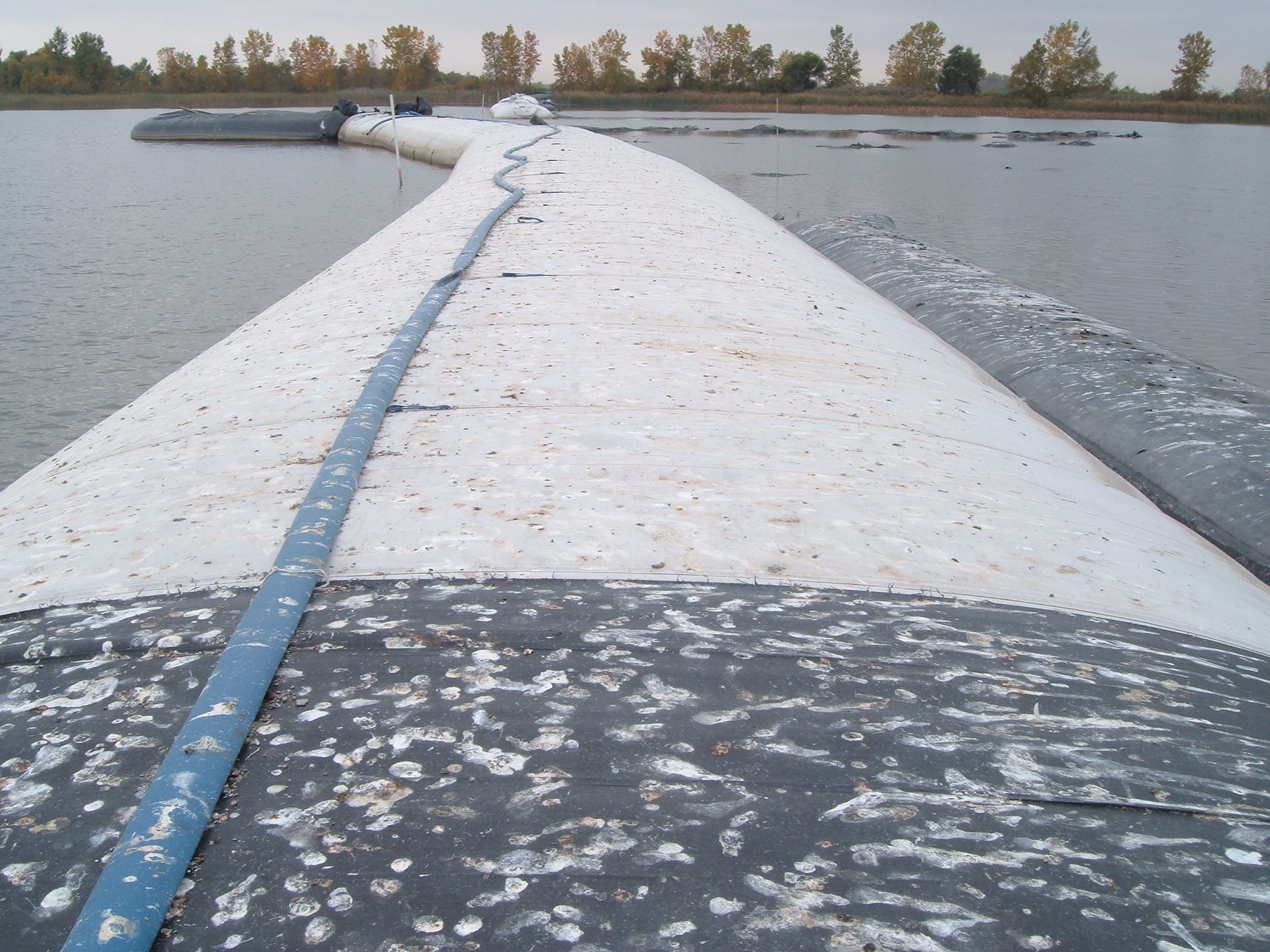
Birds and other critters enjoyed lounging on the AquaDam cofferdam system.

Workers have made cuts near the closed end of the first 6ft tall SCE AquaDam so it will drain the water out of it. The second 6ft tall SCE AquaDam, which is integrated into the first dam’s connection collar, will begin to drain after the first dam has drained a few feet in height.
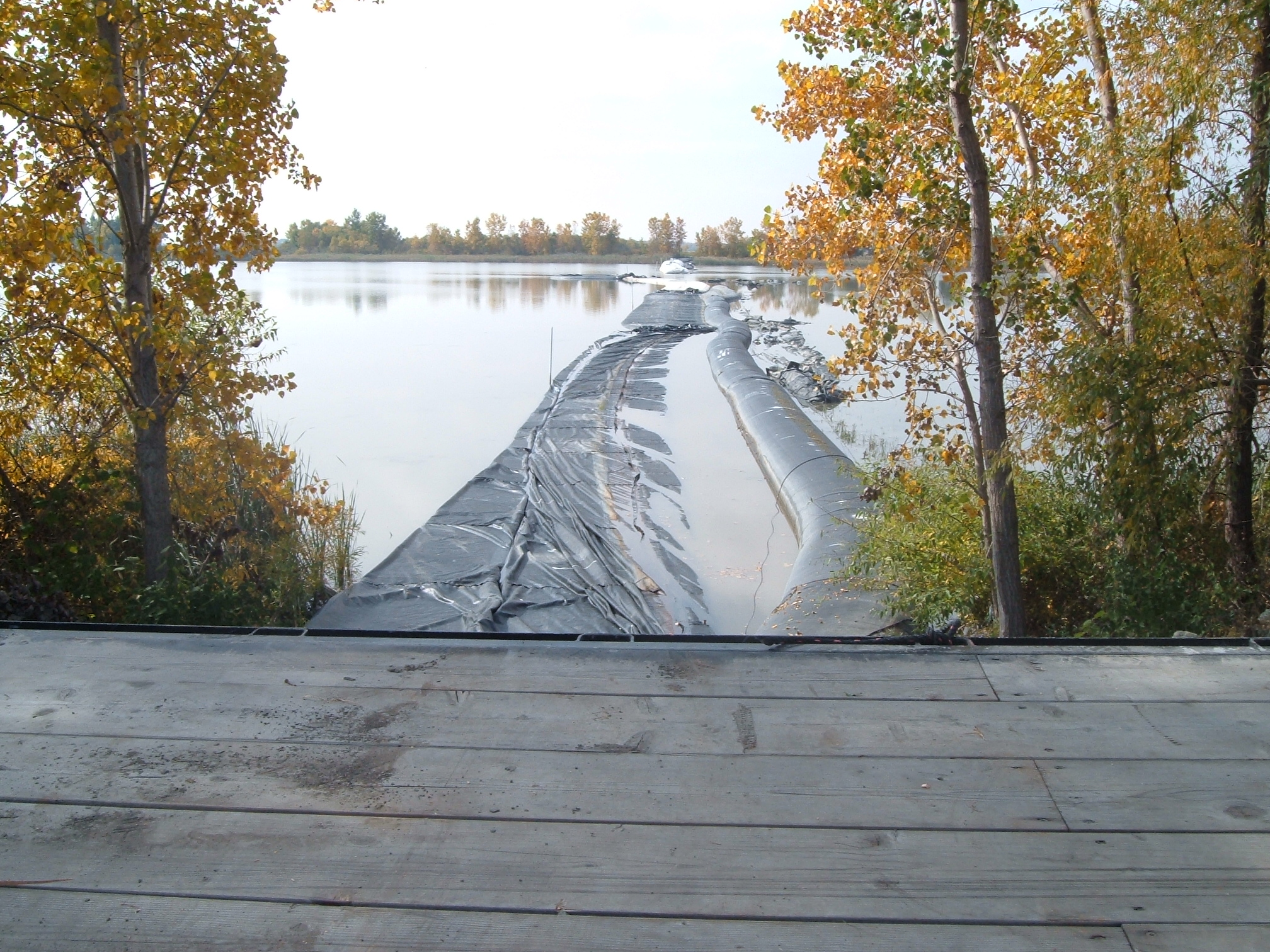
The first 6ft tall SCE AquaDam has drained enough water out that it is flaccid and floating. AquaDams are made of lightweight flexible materials and will float when empty in deep enough water. Each SCE AquaDam integrated with a connection collar to the first one has also drained because its fill-tubes were lowered while the first one drained.
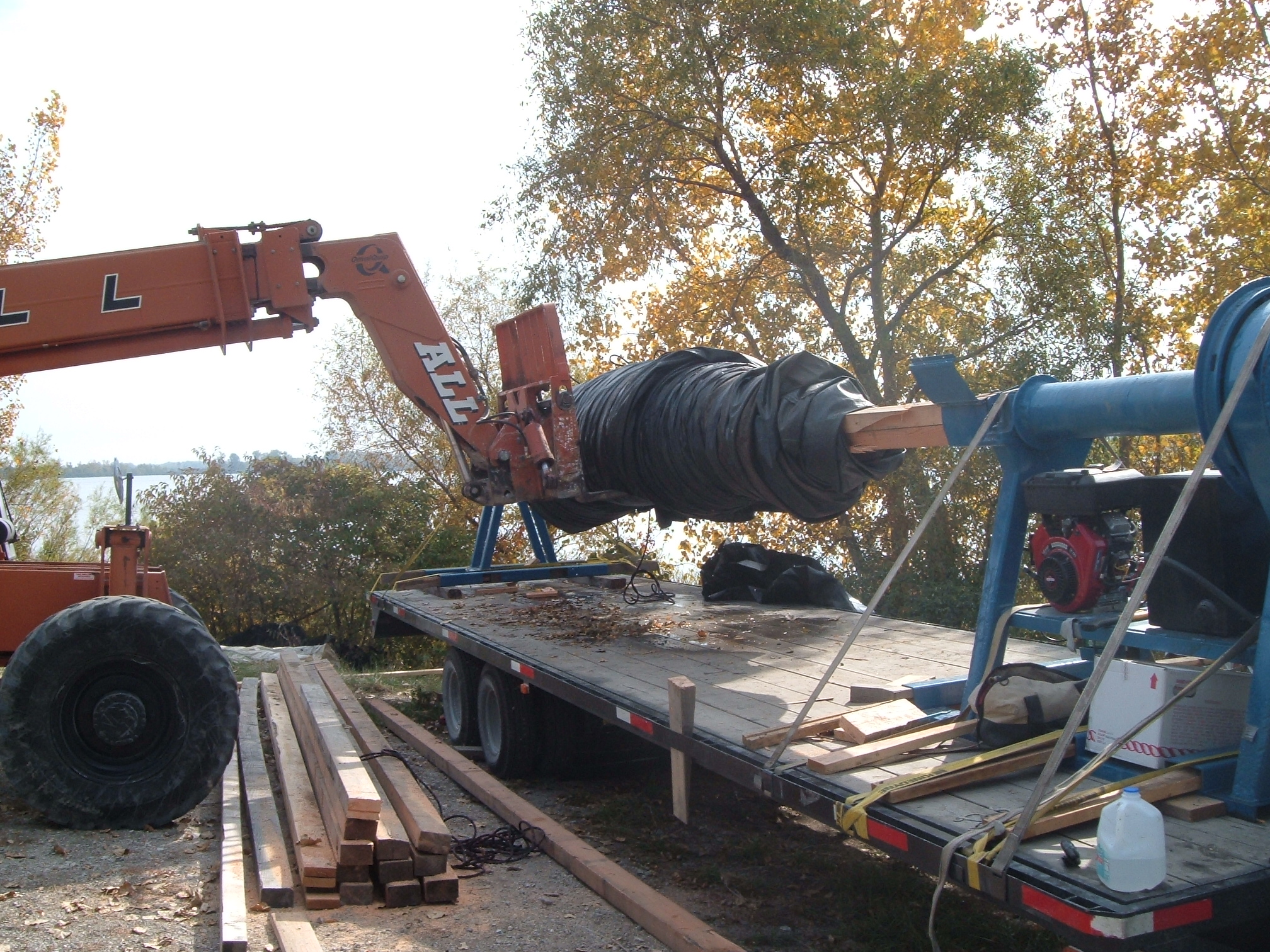
After each SCE AquaDam was pulled to shore and drained of the water inside, they were re-rolled onto a wooden beam for ease of transportation.
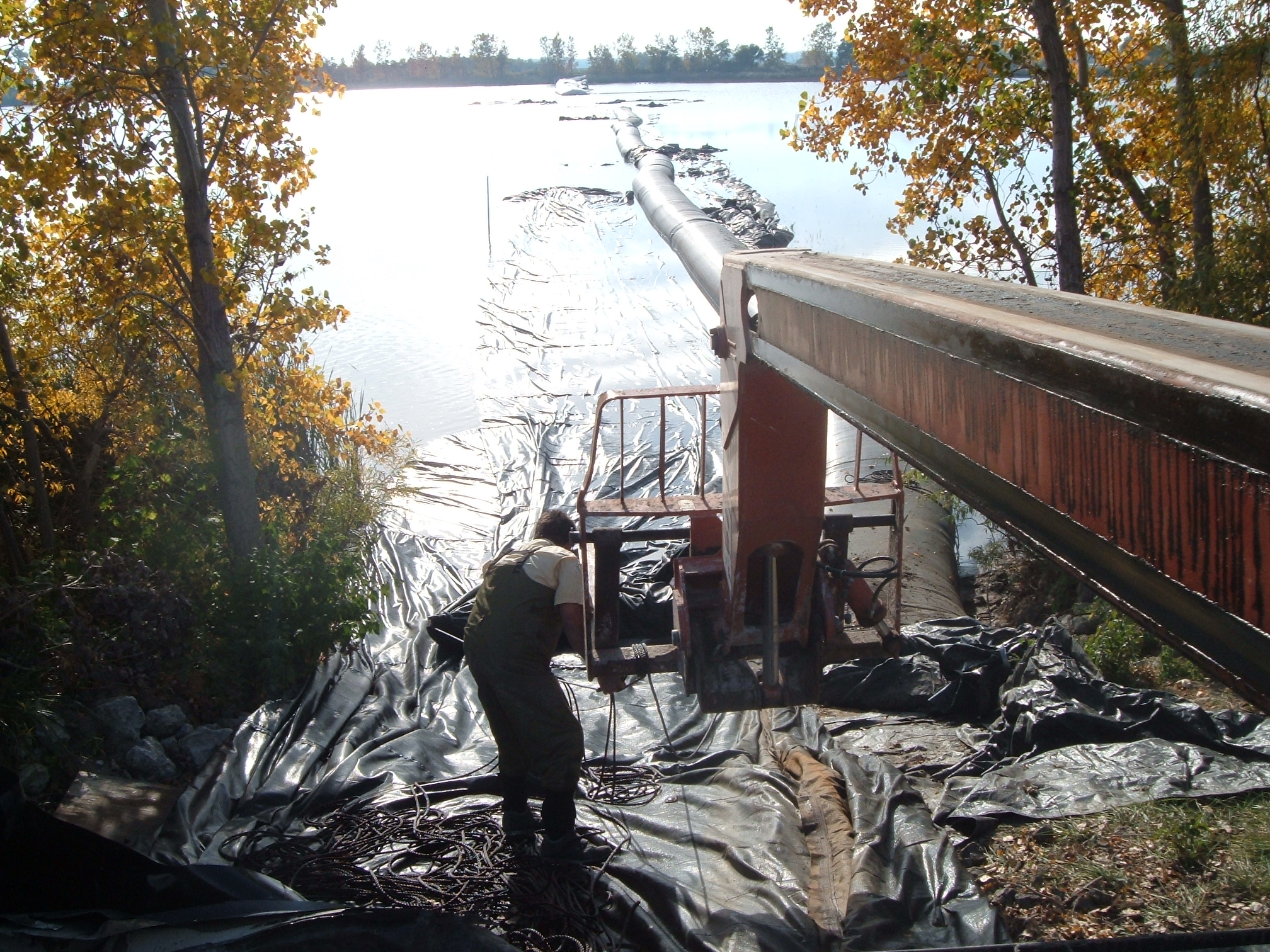
A four-wheeled rubber tire extends boom forklift was used to lift and pull each AquaDam to shore so the dams could be drained and re-rolled.

Several feet of rope may be helpful while installing or removing an AquaDam.
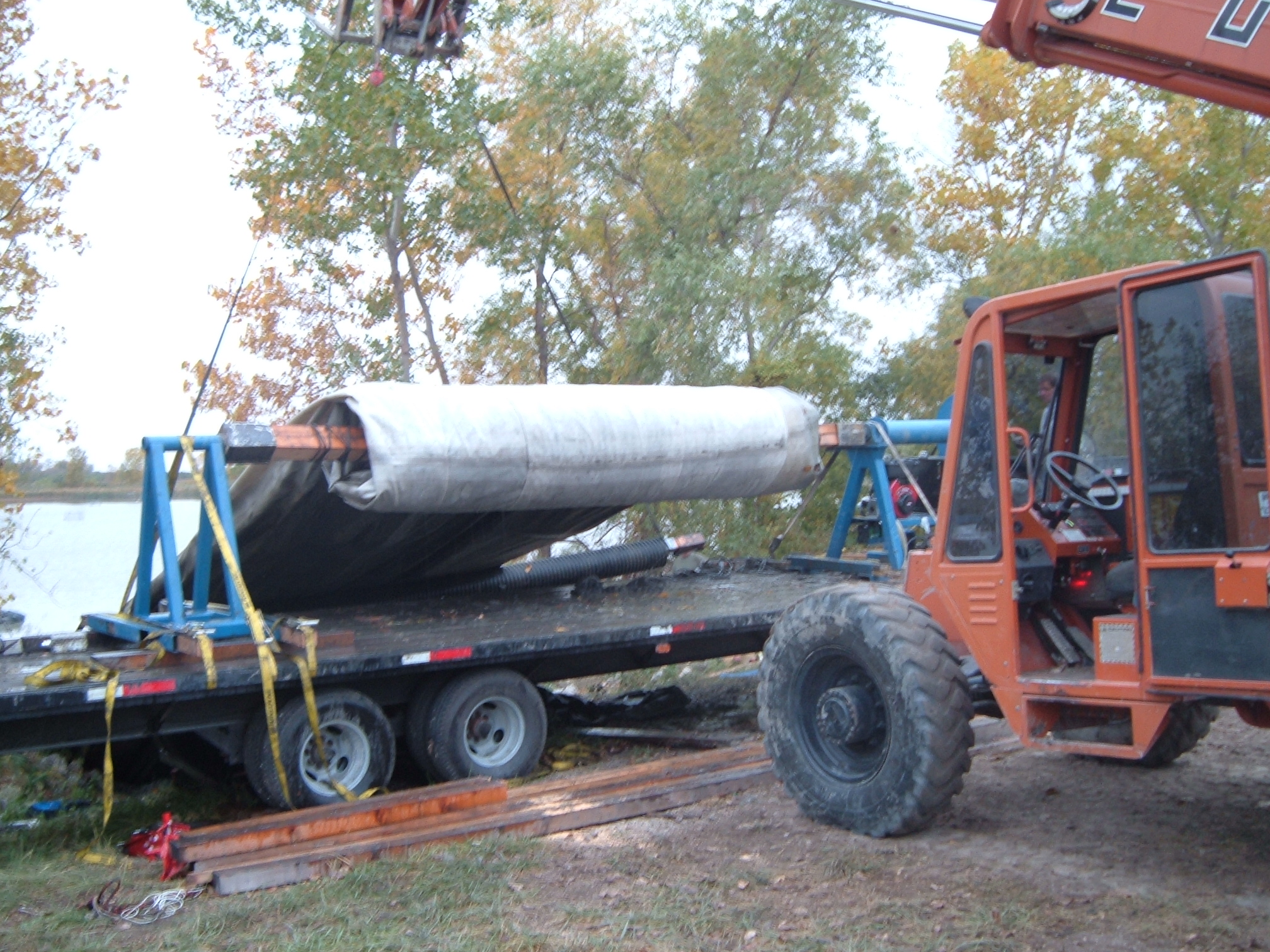
A rolling machine and the forklift work in tandem to remove this AquaDam from the mud flats. It is important to remove as much water as possible because water adds additional weight and should be returned to where it is from.

Now it is time to remove the AquaDams on the other side.
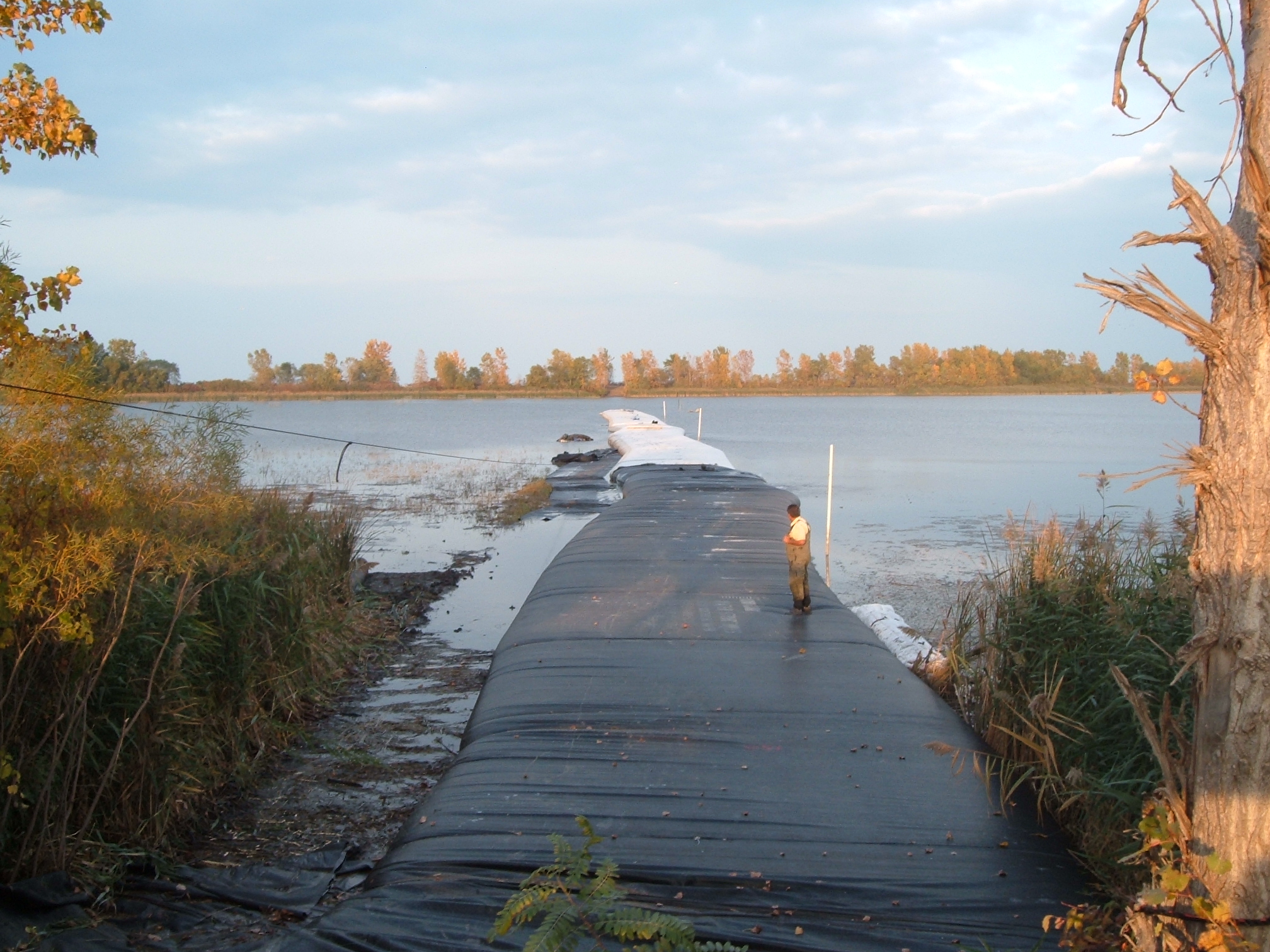
Workers removed the smaller support AquaDams while the larger ones drained.

No environmentally detrimental footprint was left behind and the plants had a chance to grow. Fantastic job AquaDam!
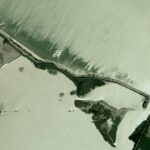

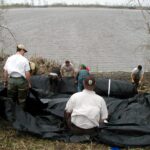
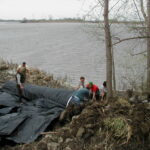
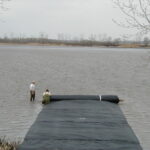

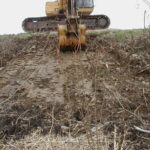

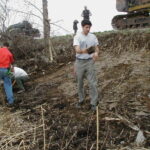
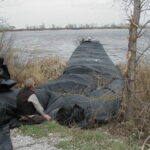


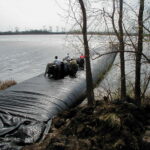
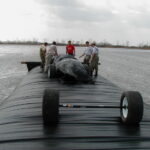
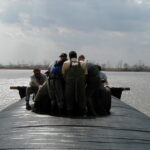
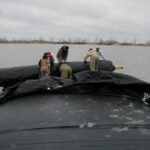
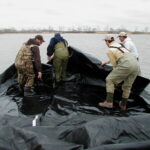
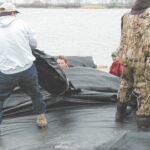



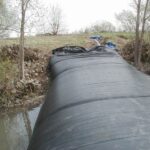

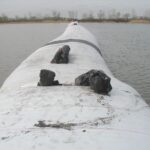
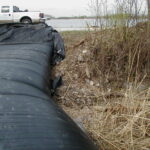
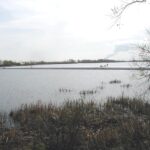
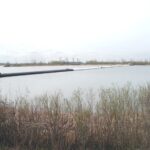


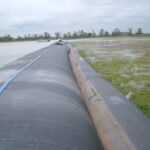
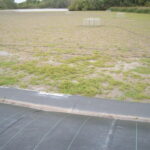

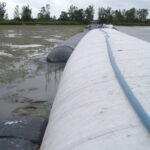

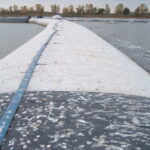

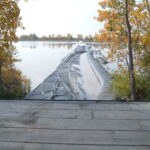
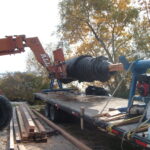


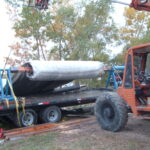
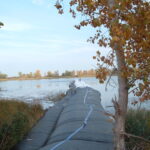

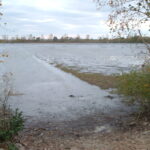
6ft Tall 13ft Wide (full) 1,500ft Long AquaDam Cofferdam System, Wetland Restoration, Ottawa National Wildlife Refuge, Installation and Removal
